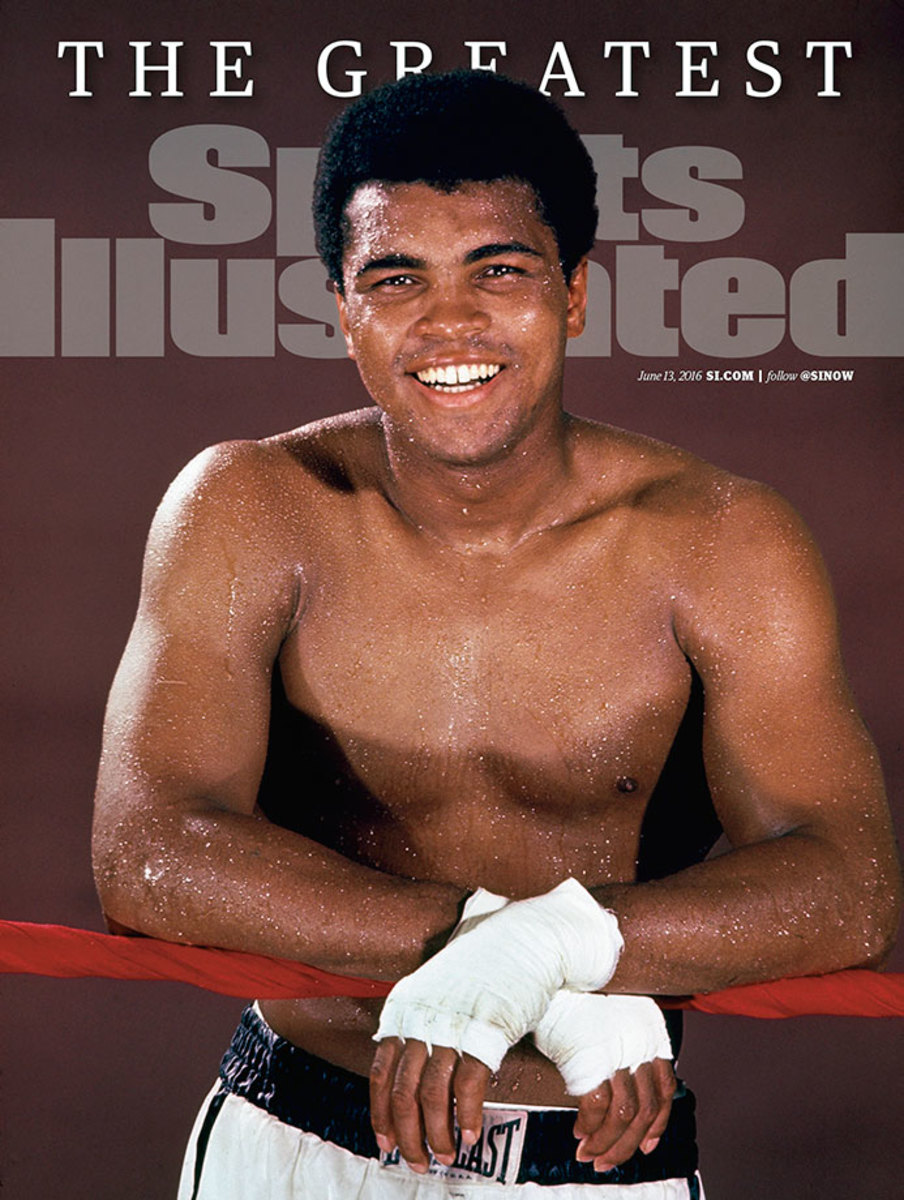SI 60 Q&A: Gary Smith on Muhammad Ali, his entourage and memories of the Greatest

Without question, the most captivating athlete during Sports Illustrated’s first few decades was Muhammad Ali. He was on the magazine’s cover 28 times from 1963, the year before he beat Sonny Liston to become the heavyweight champion for the first time, to 1980, when he lost to Larry Holmes in his quest to win the title for the fourth time. He last fought in 1981, was diagnosed with Parkinson’s syndrome in ’84 and by ‘88, Ali, though still a legend, had been surpassed in the public’s sporting consciousness -- he hadn't been on the cover of SI since losing the Holmes fight.
If even the great Ali had faded from view, then it was as if the members of his inner circle, who spent decades basking in his reflected glow, had never existed at all. So SI senior writer Gary Smith set out to discover what happened to them. The result was “Ali And His Entourage,” which ran as the cover of the April 25, 1988 issue. At over 11,000 words it was one of the longest pieces SI has ever run, but it was then and remains now one of the best. I spoke to Smith about the story, the characters, and his memories of the man who briefly made them famous.
SI: Why did you want to do this story?
SMITH: I had just done a story about [Ali’s longtime trainer] Angelo Dundee and in the interviewing for that it just occurred to me that doing a piece on each of the other people in the entourage who had built their lives around that and what had become of their lives after this rocket ride would be an interesting endeavor.
SI: Surely there were more people in Ali’s orbit than just those seven that you wrote about. Why did you choose to focus on them?
SMITH: I had just done the piece on Angelo so I didn’t put him in the mix. Then I picked people that I thought had stories with a little more pop and that wouldn’t overlap with each other. It was a little challenge figuring that out, but once I did I pretty much stuck with the ones I chose.
SI: Did you know Ali at all?
Ali And His Entourage: Life after the end of the greatest show on earth
., where he was training, and where I thought I’d be in a pack of 50 journalists and writers. I thought I’d scribble my notes down and ride the pack, but I was the only journalist there.
Ali had just finished a long workout and he’s laying on a masseuse table. Luis Sarria, who became a part of the Entourage story, is giving him a rubdown. Ali’s eyes are closed, just spent. I thought, This is going to be a disaster, he’s not going to want anything to do with this kid reporter he’s never seen before. His eyes slowly opened, and he said, “What do you need?” He gave me a couple hours with him one-on-one.
In no time he’s doing card tricks, giving me all he’s got. It was really a great introduction to him. And that humanity that I saw the very first time I met him was confirmed in a number of ways since then.
SI: Why do you think you were the only one there?
SMITH: I’ve never been able to figure it out. I guess it was pure chance that that day was when the media circus blinked into darkness somehow. It was pure luck but I thought it was pure bad luck when I first got there.
SI 60 Q&A: Chris Ballard on 'The Courage Of Jill Costello'
SI: Ali is the focus of the introduction, but otherwise, in a bit of a role reversal, he’s just a bit player in this story that is about other people. Did you want to have him be a bigger part of the story?
SMITH: I had a sense that that opening scene would really set your grounding at the beginning of the piece. I felt like where he was at was captured in that intro. Yeah, you probably could have done a longer piece but that really captured where he was. It was really more about his muteness than his voice in a way. There could have been more but I really felt this other plan was better.
The idea was, obviously, the Ali comet had flickered out and died and I thought getting a sense of that at the beginning of the piece would then help echo through the rest of the pieces. I just went up to his farmhouse in Michigan that he was living in at the time -- it was said to have been previously lived in by Al Capone, but I’m not 100 percent sure about that -- and he was again a delight to be with. Ali just has this way of creating scenes or moments just by being around him.
We sat and had lunch together and then he was like, Come on, hop in the car. You don’t even have to ask him these things, he just does it. He says, Here’s a watch, keep time. He does this workout and it’s pretty surprising how quickly he’s still moving. It’s like watching a clock run down and run out of ticks right in front of you. It was amazing to watch, him losing all his energy right before your eyes.
We went into this barn-like building, and you have no idea where you’re going and didn’t ask to go there and he starts showing you all these pictures lined up against the wall. Why are they turned facing against the wall? He doesn’t have them in his living space but he had them out in this barn and he starts turning them around and showing them to me and they’re all streaked with pigeon crap. He hadn’t paid attention to all that stuff. It was just so telling where he was at. This stuff is just handed to you that totally captures the feeling of where things were with him. I would have been crazy not to start the story that way.
SI: Do you think Ali had a sense of how much the other people in the story missed being a part of his life?
SMITH: I don’t think that really registered with him. He still considered them to be friends and people he’d intersect with here and there, but I don’t think it fully registered on him the depths of the emotional repercussions of what they’d had and the plug being pulled.
When that thing stopped it screeched to a halt very fast. Once the Parkinson’s syndrome crept in, his voice was so compromised that he just couldn’t talk the way he talked before. You really got a sense that he wanted to be somebody else. That whole fast-talking life he’d led, he really needed to move on to something different, something quieter. For an athlete to be that gifted, that fast physically and verbally . . . it wasn’t just a career that was pulled on him, it was a way of being that was yanked on him. He really had to absorb a lot and come to terms with mortality and come to terms with how athletes end. It really propelled him to turn more to his religion. He’d been reading this stuff for years about the impermanence of life and turning toward something beyond and now he was facing an extreme example of it right in his lap.
• Click here to read all of the stories and Q&As in the SI 60 series
SI: Why start with Dr. Ferdie Pacheco?
SMITH: I thought it was interesting that Ferdie was the one who capitalized on his position with Ali and used it as a springboard, career-wise. The other ones after would have more emotional layers. Ferdie had figured out how to make this work for him. The others not so much. It was more of a deeper emotional toll for them and so I just felt like the piece would move along and gain more emotional depths to it by addressing him first and moving from there. Figuring out how to play the lineup was a real managerial head-scratcher there.
SI: Yeah, you want those guys who get on base a lot to bad leadoff.
SMITH: (Laughs.) Ferdie was definitely on base. I felt that sequencing them that way would have a little more power. I remember juggling that lineup for quite a while.
SI: Were you surprised that all these people had lost connection with Ali?
SMITH: Yeah, you would have thought that there would have been more connectivity but it just showed how much Ali was the nucleus of it all. I was surprised. It was as if fragments had scattered after the explosion. Once that center was gone there was nothing there to hold it together. I remember the Facilitator, Gene Kilroy, lamenting that they hadn’t all gotten together.
I remember thinking this might be a great movie or play if you got them together, if somebody had a reunion and all these things start coming out around the dinner table: joy, celebrations, jealousy, animosity. All these moments they had shared, maybe getting together at that old cabin up there, would have had a great feel to it.
SI 60 Q&A: How Jon Wertheim learned the art of the hustle from Kid Delicious
SI: Did you ever try to do that?
SMITH: I never quite did. I remember having the idea go through my head and thinking, Somebody ought to run with this, but I’m not sure that it’s me. But anyway I remember Kilroy making that reference and having that feeling like we should get this gang together.
SI: You used an awful lot of quotes in this story, certainly more than what you usually do. Why?
SMITH: In that kind of setting I was more comfortable with the quotes. In a story centered on one person you’re more in storytelling mode. Here, people were saying really powerful things about what had happened to them and their lives as a result of this incredible velocity and then drastic halt. Each of these [chapters] was a shorter thing, obviously, than what I usually do, and each had a distinct separateness to the pieces. It felt that their own rendering worked better.
SI: Were you surprised to learn what these people were up to?
SMITH: No. I spent a day with Lana Shabazz at the school where she was working in the kitchen as a cook, and then a day at the casino in Vegas with Gene Kilroy and then at the squad car with Pat Patterson who was a policeman in Chicago and went around with him. Each one of these [vignettes] had an interesting experience to it.
SI: And you were chased by dogs when you went to visit Luis Sarria, right?
SMITH: (Laughs.) That was surreal. That was a very intense moment. Hearing this fury of hell coming up as you’re trying to meet somebody was really a feeling that there could be something very interesting here. How much do I want to risk here to get this piece of the story? I have a very strong memory of that one. It was all manner of dogs and mixed breeds, all kinds of creatures there. They would just set each other off, and the fury of one would whip the others into this tizzy. It was dicey, and I had to figure out whether to bail on this thing or not.
SI: The Bundini Brown section was interesting in that he wanted you to bail. How did you track him down?
SMITH: I really can’t remember how I found him. I had some feeling that he was a real character from having read stories about Ali through the years. Somebody, whether it was Gene Kilroy or someone else, knew a phone number for him. That was a pretty memorable experience as well. He was just a different kind of cat and so poetical and yet so not obvious. He’d say things you’d be scratching your head over.
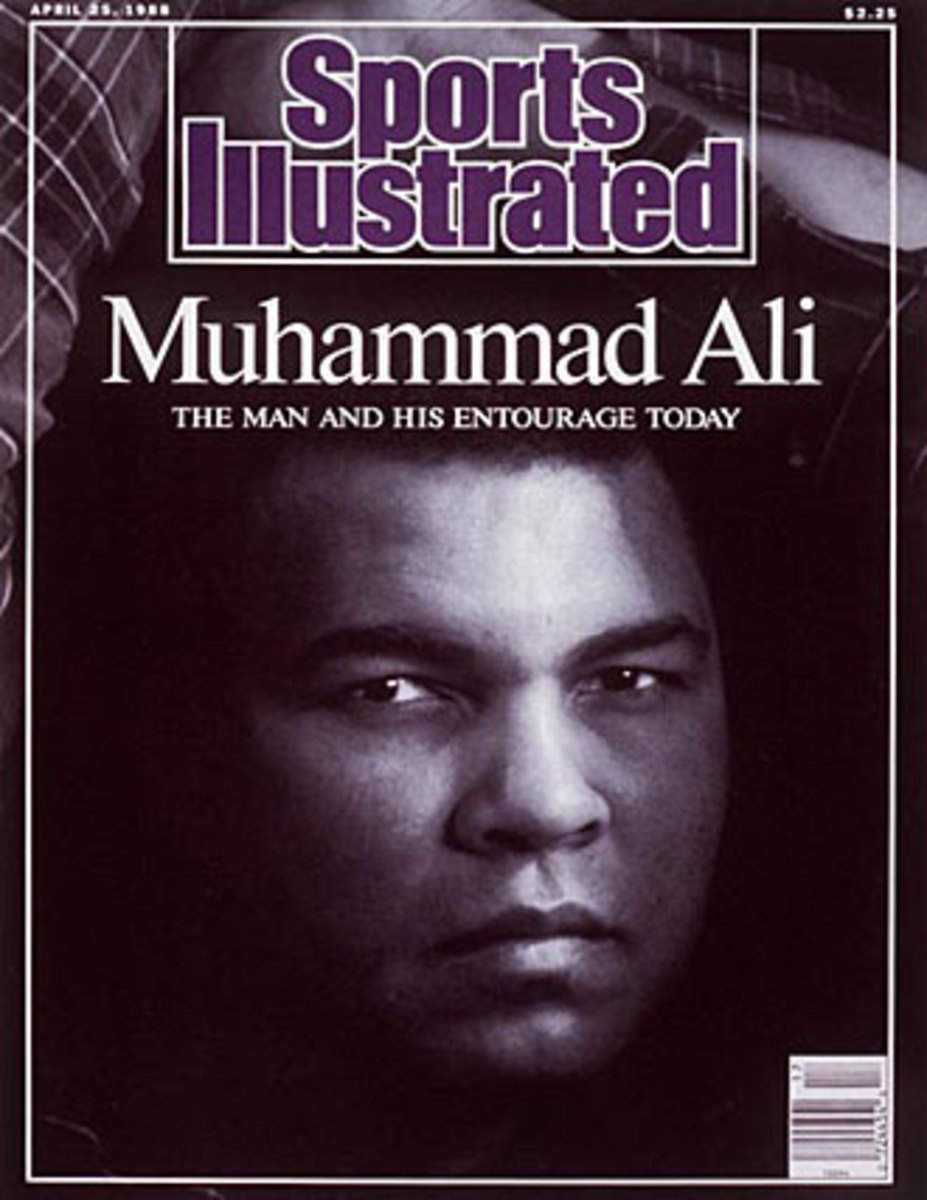
SI: He says several times that he wanted you to leave, but you obviously never did. It seems like it might have been uncomfortable to stay there while this broken man sort of rambled on.
SMITH: If I’d been five or 10 years younger I probably would have bailed. But at that point I had enough sense not to feel like I needed to get out of there. I sensed that there was something else going on, and he wasn’t really kicking me out. And then this push-and-pull things starts to develop: Get out of here. Wait don’t leave me.
It would get real quiet for periods of time and he’d kind of be staring off into space and he’d say something indicative of “Time to mosey on down the road now.” I remember getting up toward the door and starting to leave and him saying something more and finally sliding back into my seat. That was the real undercurrent of the whole thing.
SI: He wound up dying shortly afterward. Did you know how sick he was when you spoke with him?
SMITH: He was going to be the ender no matter what, but that just added another big bottom note to the whole sense of things petering out that the story was about. Him dying right at that point cemented that. It was really a strange way for the whole thing to have played out. I felt really fortunate to have gotten to him. I think it was about a month after we spoke that he was in the hospital and was really on the ropes. I think I even tried to reach Bundini in the hospital.
SI: Was the story pegged to a particular anniversary?
SMITH: It wasn’t pegged to anything, it was just, “Run it now.” When I wrote it I remember hoping they would go for it at that length. Rob Fleder would have been the editor and Gregory Heisler did a great job with the photographs. They ran it as is, much longer even than the typical bonus story.
SI: What was the reaction like?
SMITH: At the time that was definitely the biggest response to a story I’d ever had.
I remember the outpouring when the story came out, people had such an emotional connection with Ali. There was something about it capturing the mortality of our own lives. The people who were responding, you could imagine they were seeing that fade out with Ali and the people around him and it had an emotional wallop as if their own lives were vanishing in a way.
SI: What was your own connection like to Ali, both personally and professionally?
SMITH: For me it started at age 16 and going to see my first closed circuit fight, driving with a group of friends to an old arena in Baltimore to see the first Ali-Frazier fight [in 1971]. It just had an incredible emotional power that evening. That as a teenage kid from a white suburban word going into this downtown old arena there was an explosive energy because that was probably the most anticipated fight ever. Ali had just recently returned from being vanished because of his stand on Vietnam. This was the fight everyone was anticipating for years.
There was no doubt that that’s what ignited my interest in boxing, just the rawness and the power that it held over people and the characters and all that stuff kind of lit up in my imagination for the first time that night. Then the Ali-Foreman fight [in 1974] and going to the closed circuit viewing of that fight in Philadelphia. Again, just an unbelievable night, what incredible drama and theater those things were. That’s kind of hard to imagine now -- you’d think you’d have to be there, but in that era these closed circuit events had a real drama to them. There were people in the audience doing crazy stuff and yelling crazy stuff. To be at an event where you’re not really at the event but it has this drama to it was really unique.
As a guy who grew up near Philly I was a Frazier guy. To me, not knowing either guy at all, Frazier was more of a salt of the earth character that I’d want to root for.
The whole arc of it started to change with the day I went up there that I talked about earlier. I ended up doing a story 10 years after the George Foreman fight, in 1984, then again for the Angelo Dundee story, then again for this story. Each time I was just starting to really see his humanity. He started to become a favorite, and of all the people I’ve interviewed he’s right up there with all the ones I enjoyed the most.
SI: Why?
SMITH: Just the humanity and his humor. When I was at his house for this story, at the end of lunch I went to the bathroom and I’m coming out trying to open the door and it wouldn’t open. I thought, “Oh crap, how did I do this, what the hell am I supposed to do here?” Finally I’ve just about given up and I hear this crazy little giggle on the other side of the door. Ali the whole time had been holding the door closed on me.
SI: He was diagnosed with Parkinson’s in 1984, so this was only a few years later. What kind of shape was he in by then?
SMITH: He was amazingly accepting of his fate. He had me watch his workout to show that he’s still got it, but there’s not a speck or a trace of self-confidence, and he was not making excuses. He was just totally natural about all of it: Yeah, I’ve got this surge that makes me want to show I’ve still got it, and then Yeah, I’ve got nothing left. And he never said it, but it was, That’s fine too. It was all natural life being played out in front of you.
Greg Heisler was kind enough to send me a picture he took of Sarria and Ali for that piece, and in the one of Sarria his face is laying in his massive hands. Those are probably the only two pictures from any story I ever worked on that were on the wall of my house. A lot of it had to do with the power of Greg’s photography. There’s just so much humanity in those two pictures, and that’s what appealed to me.
Muhammad Ali's SI Covers
June 10, 1963
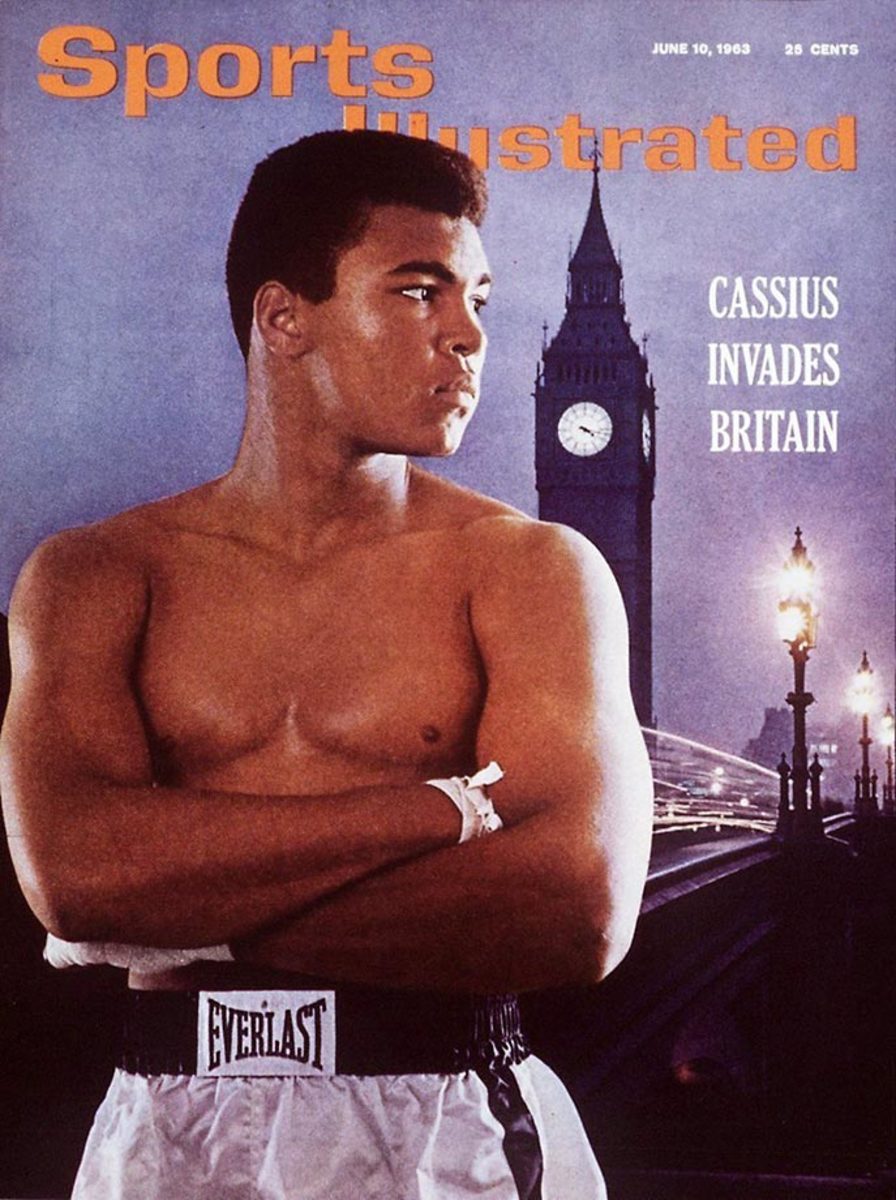
February 24, 1964
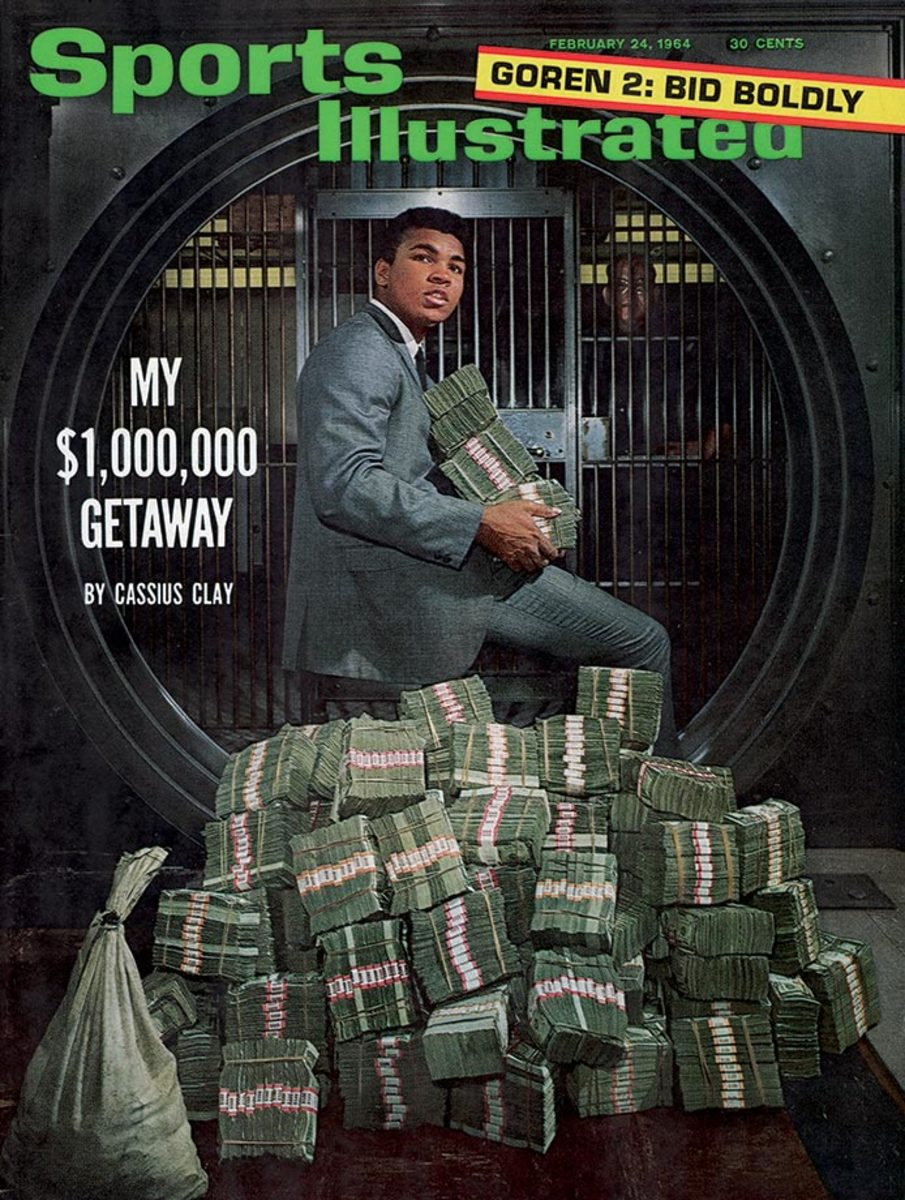
March 9, 1964
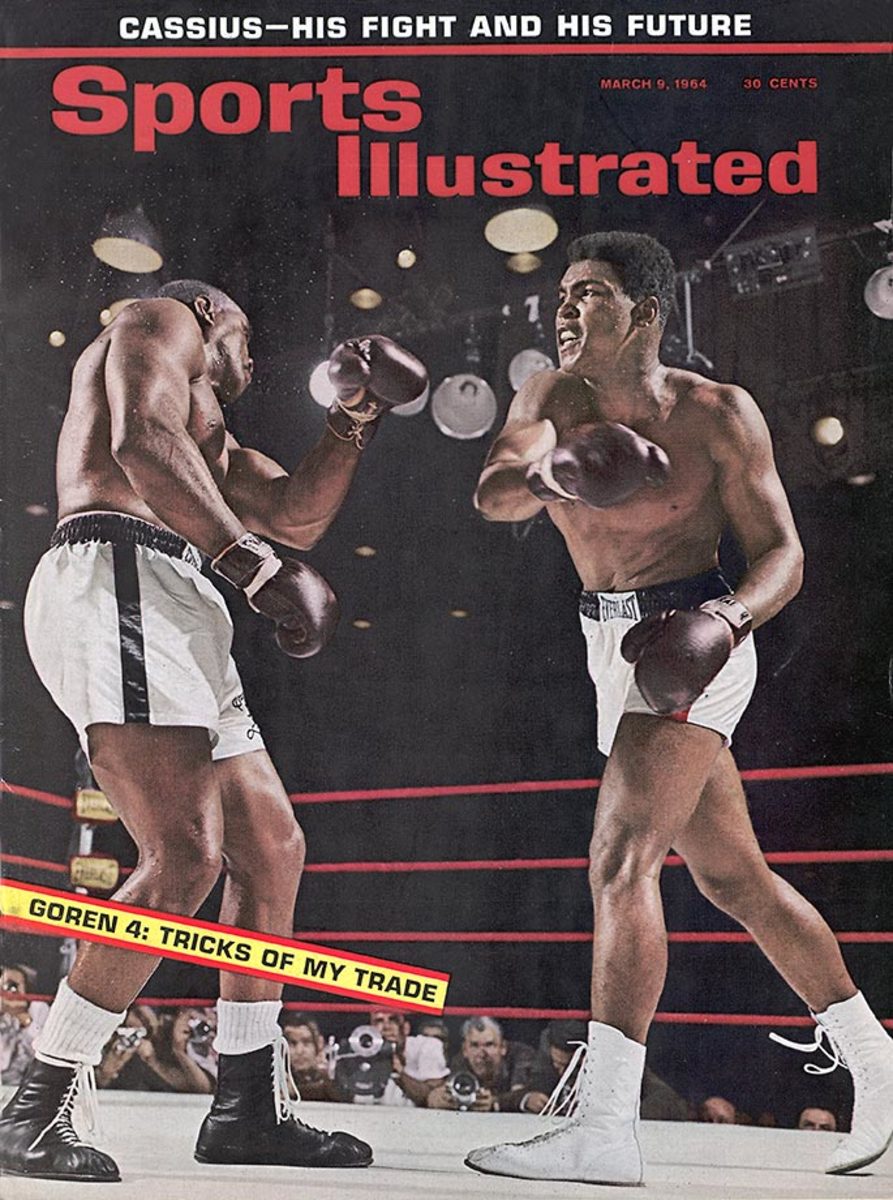
November 16, 1964
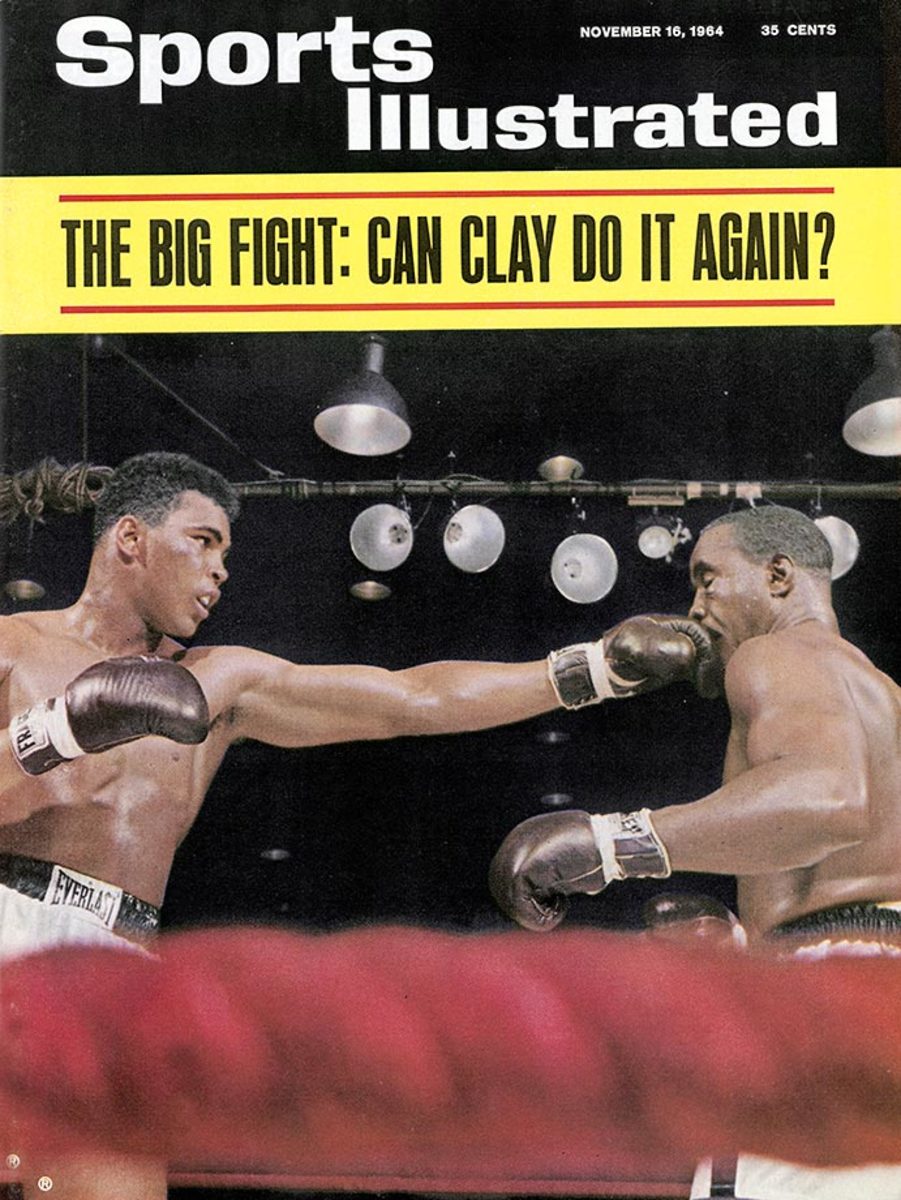
May 24, 1965
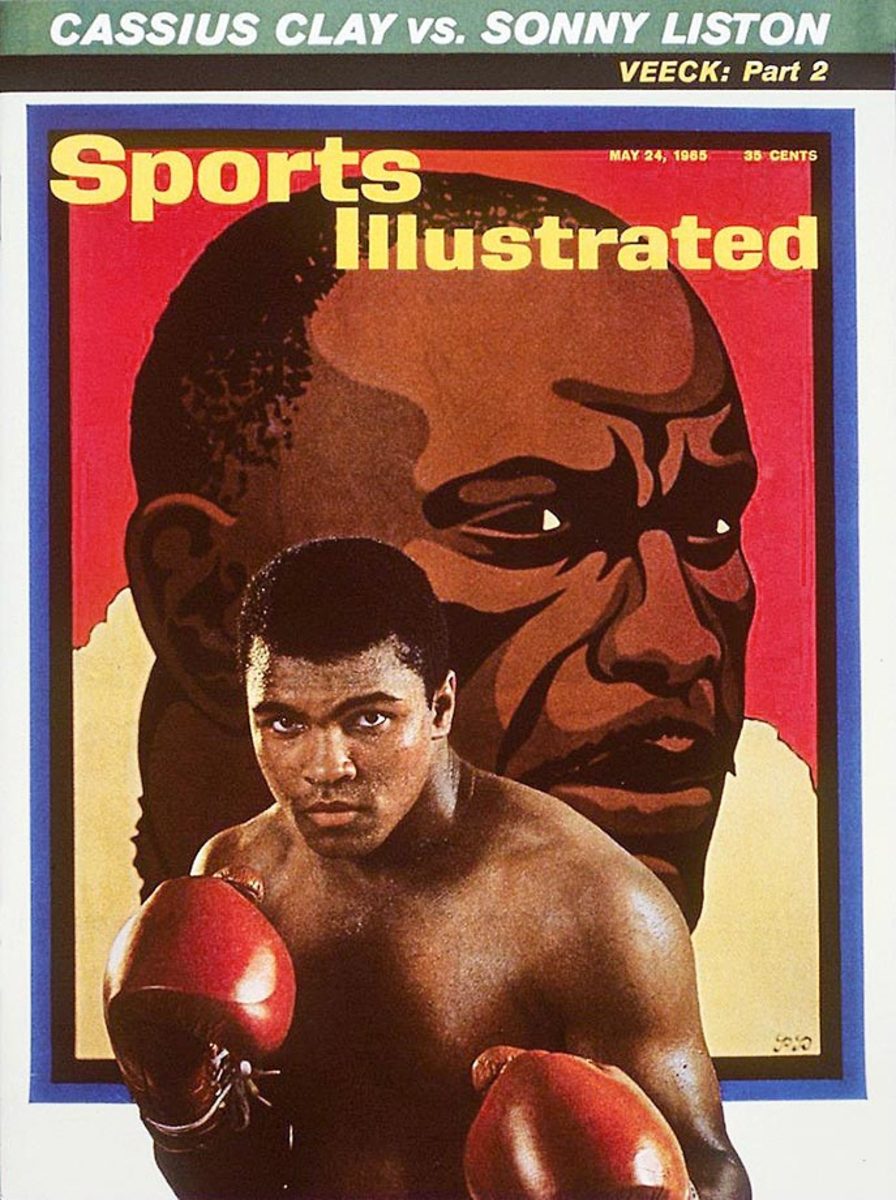
June 7, 1965
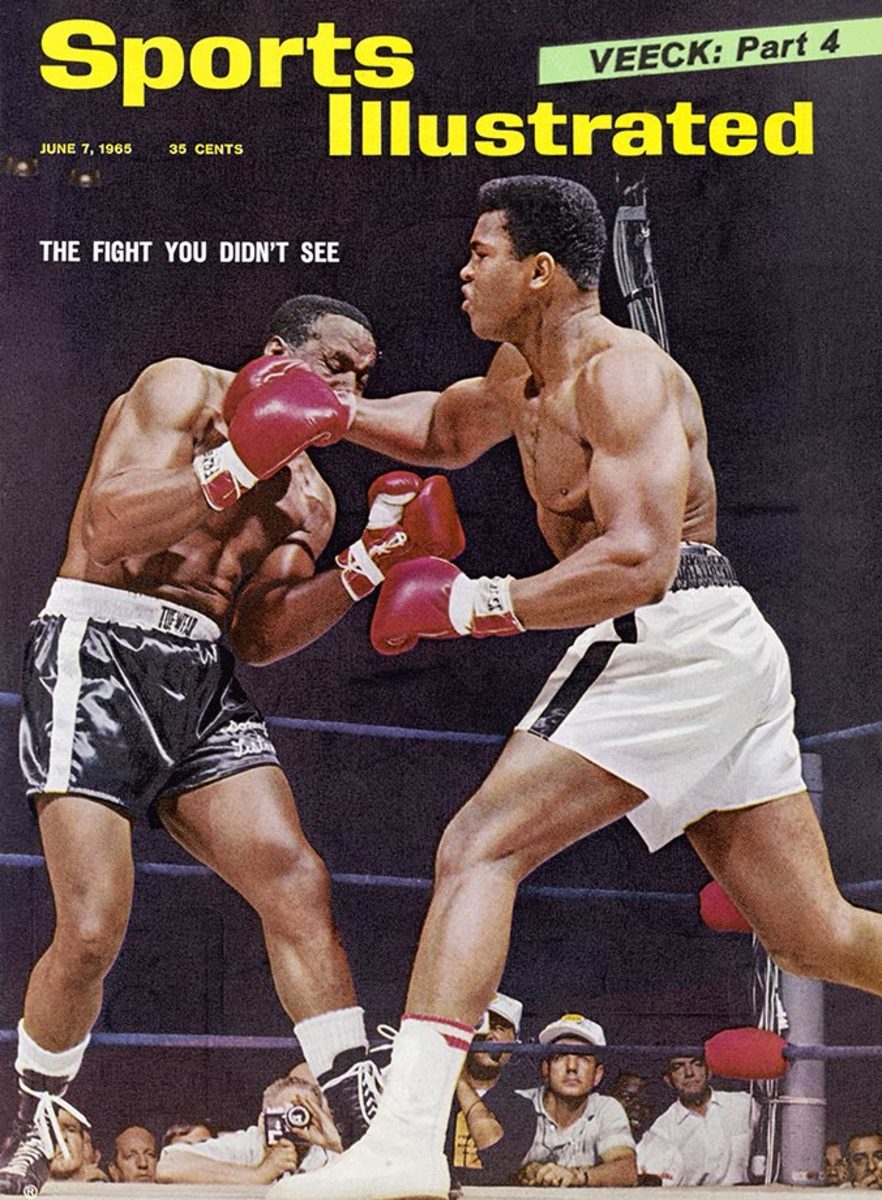
November 22, 1965
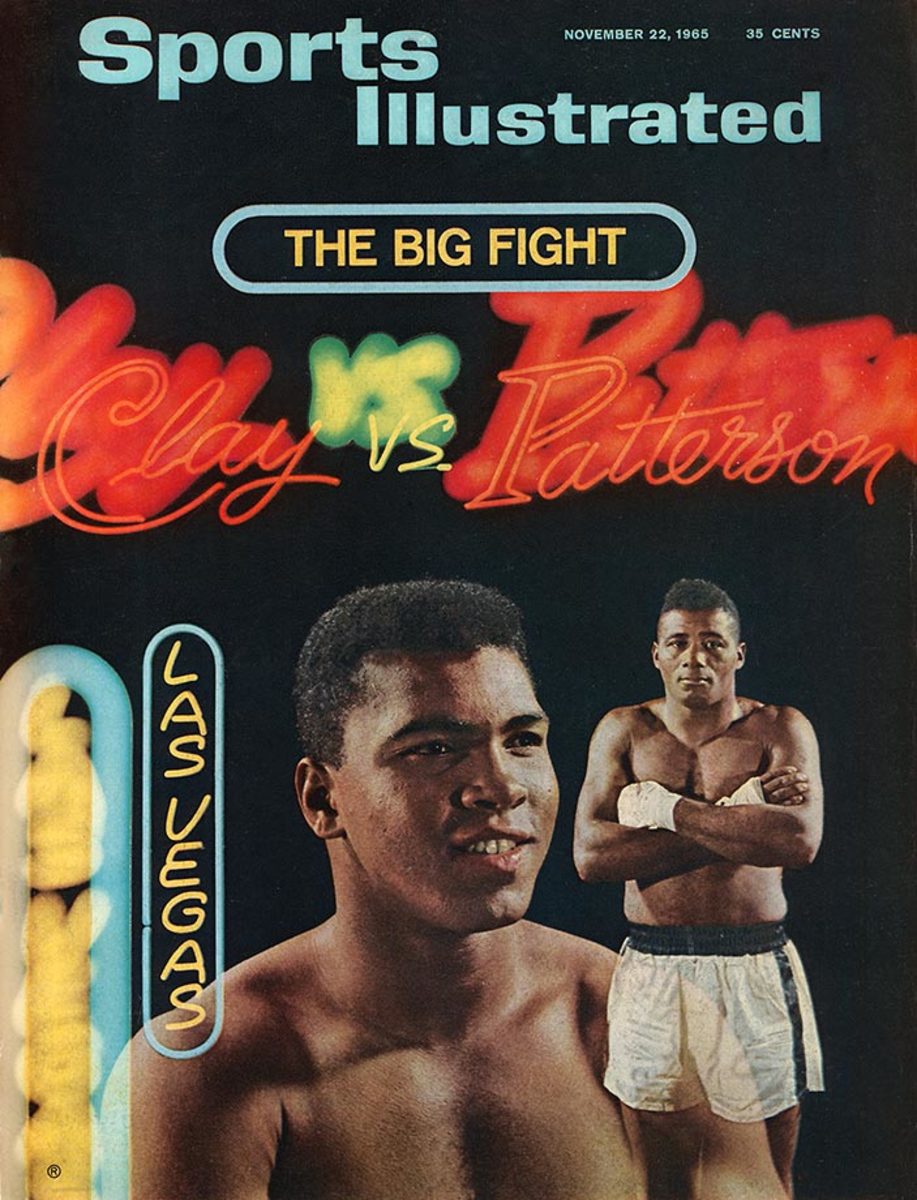
April 11, 1966
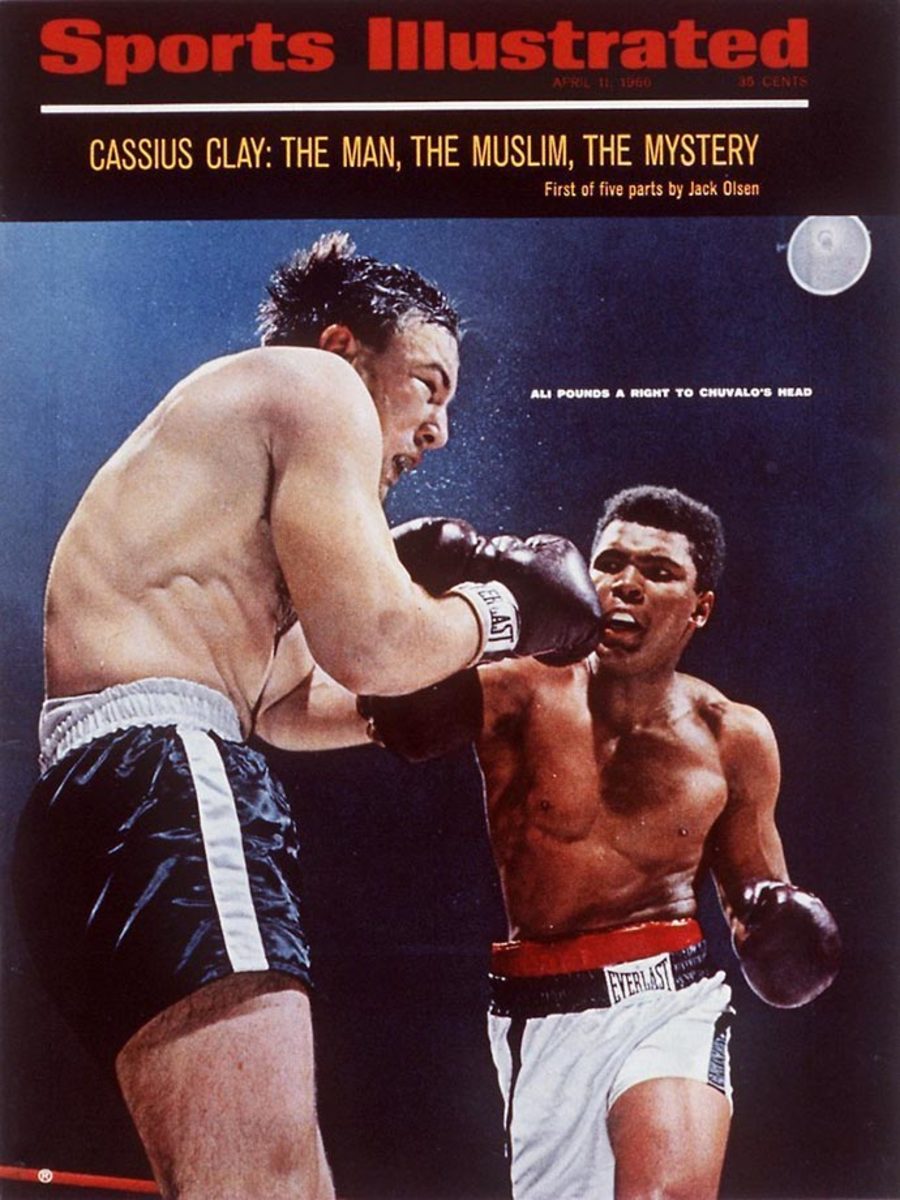
February 6, 1967
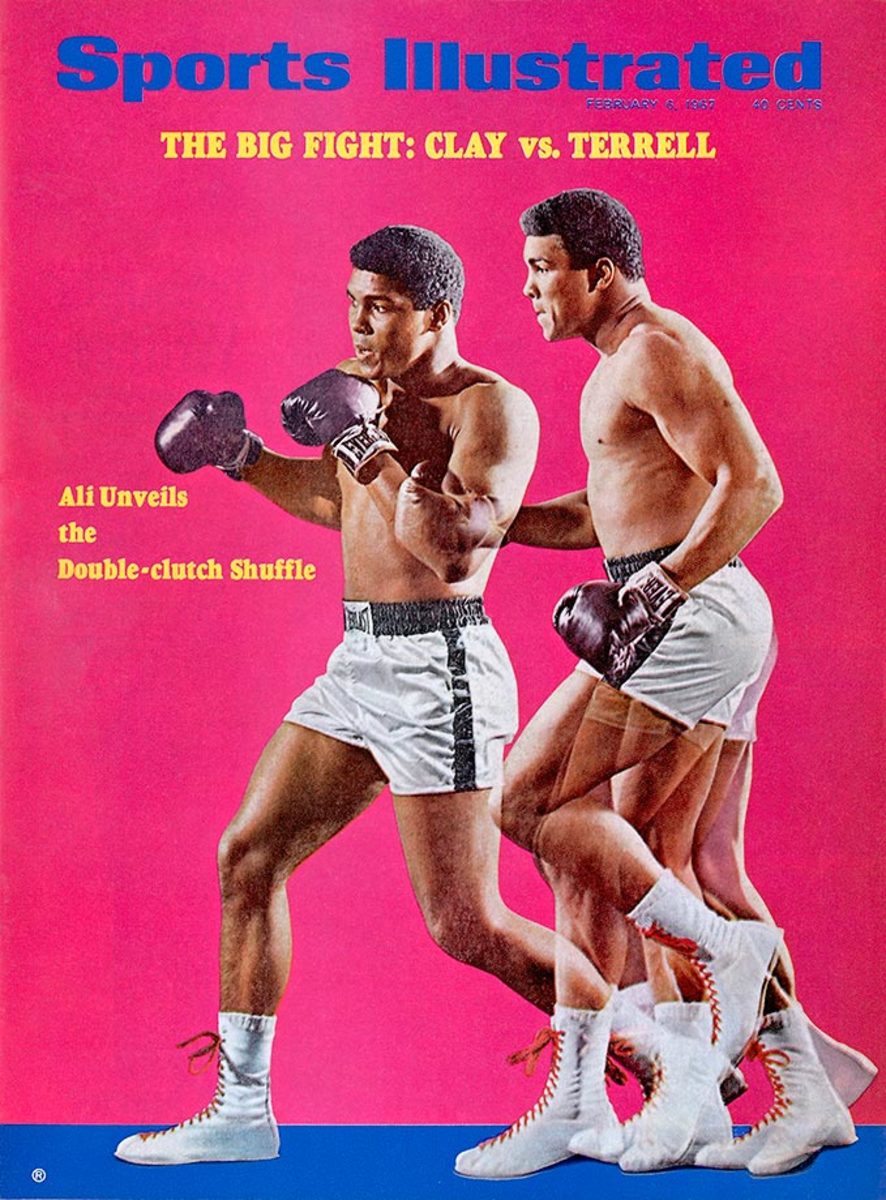
July 10, 1967
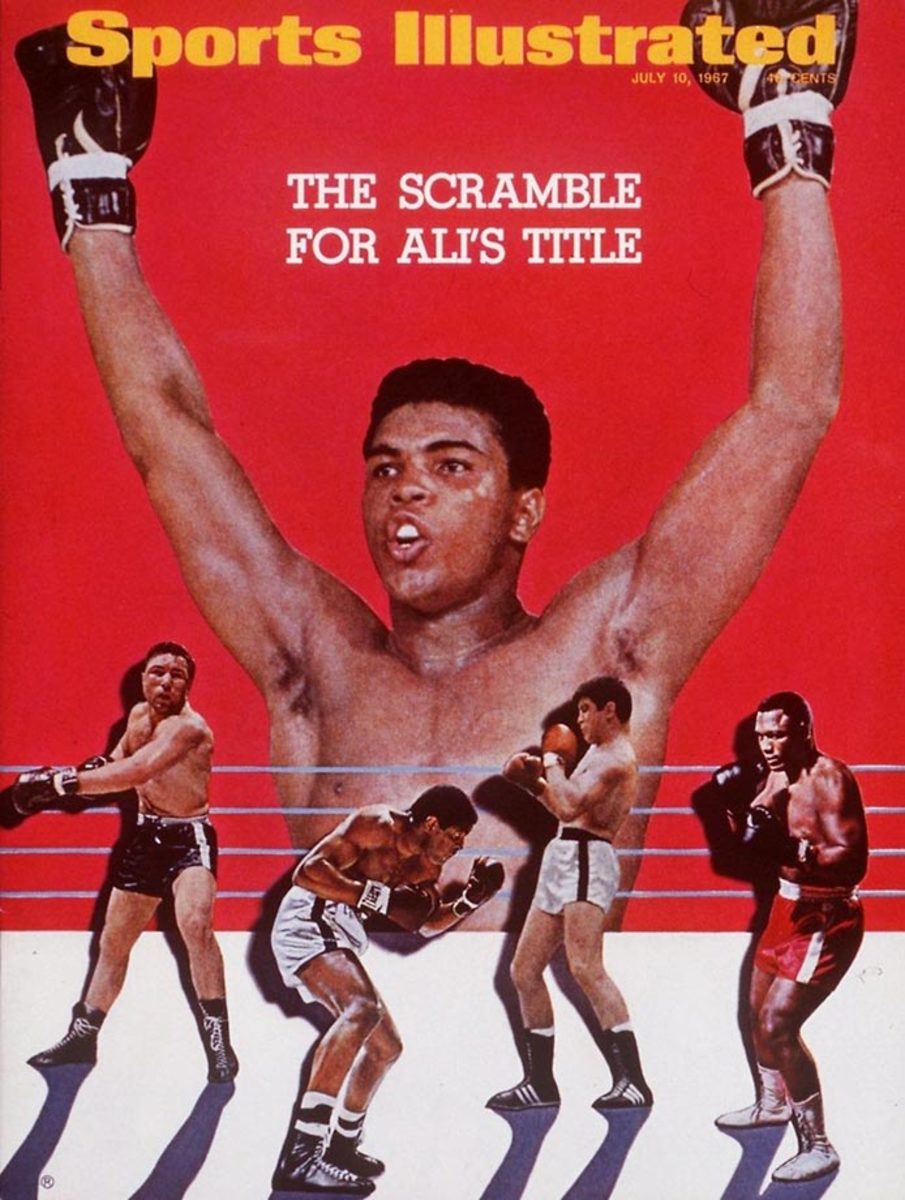
May 5, 1969
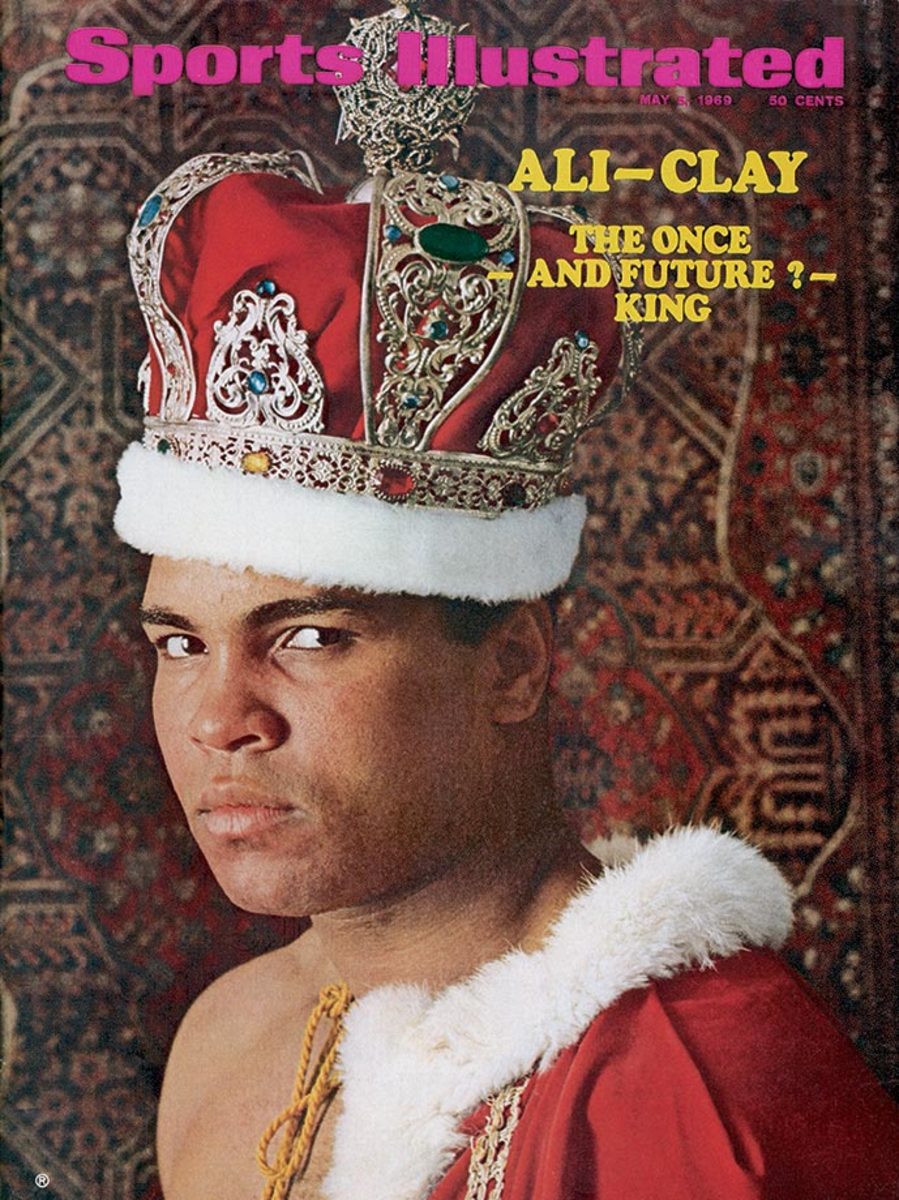
March 1, 1971
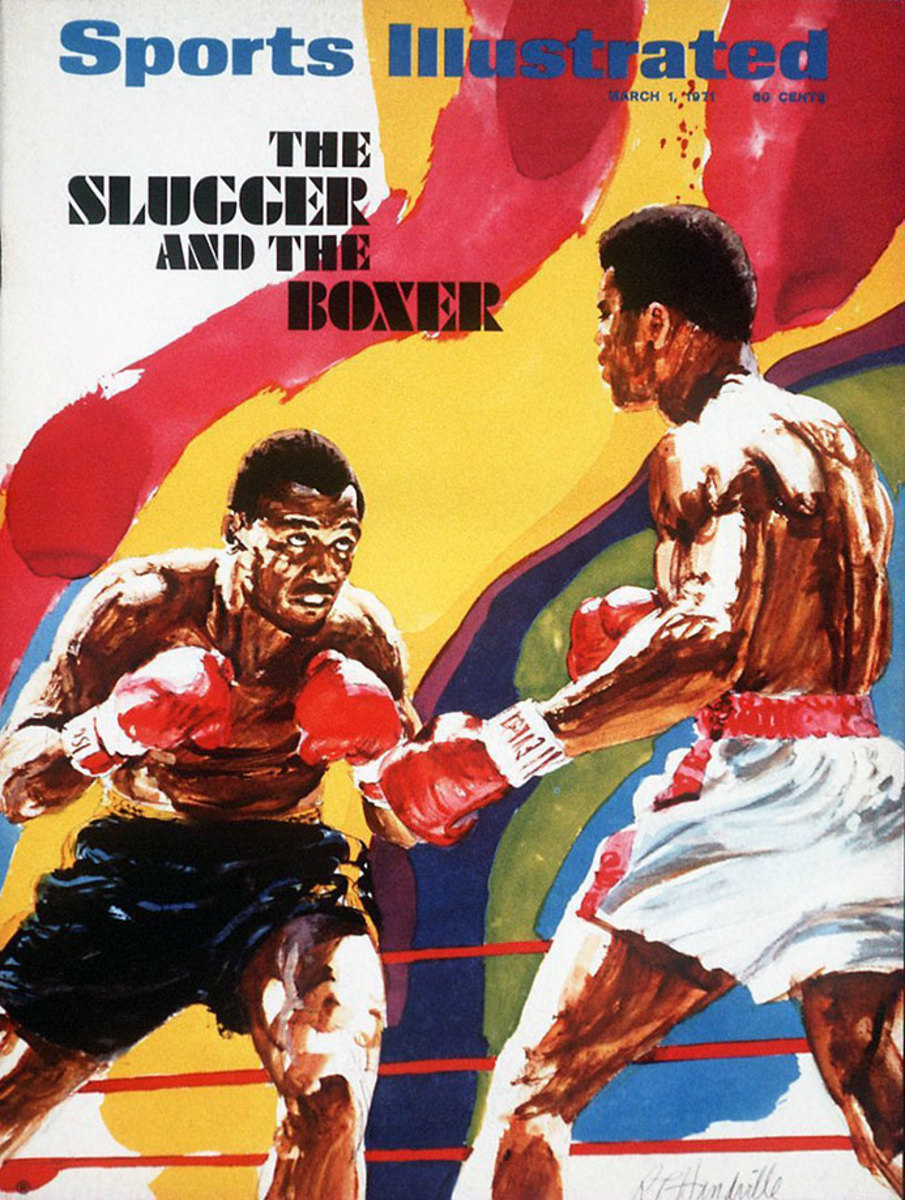
March 15, 1971
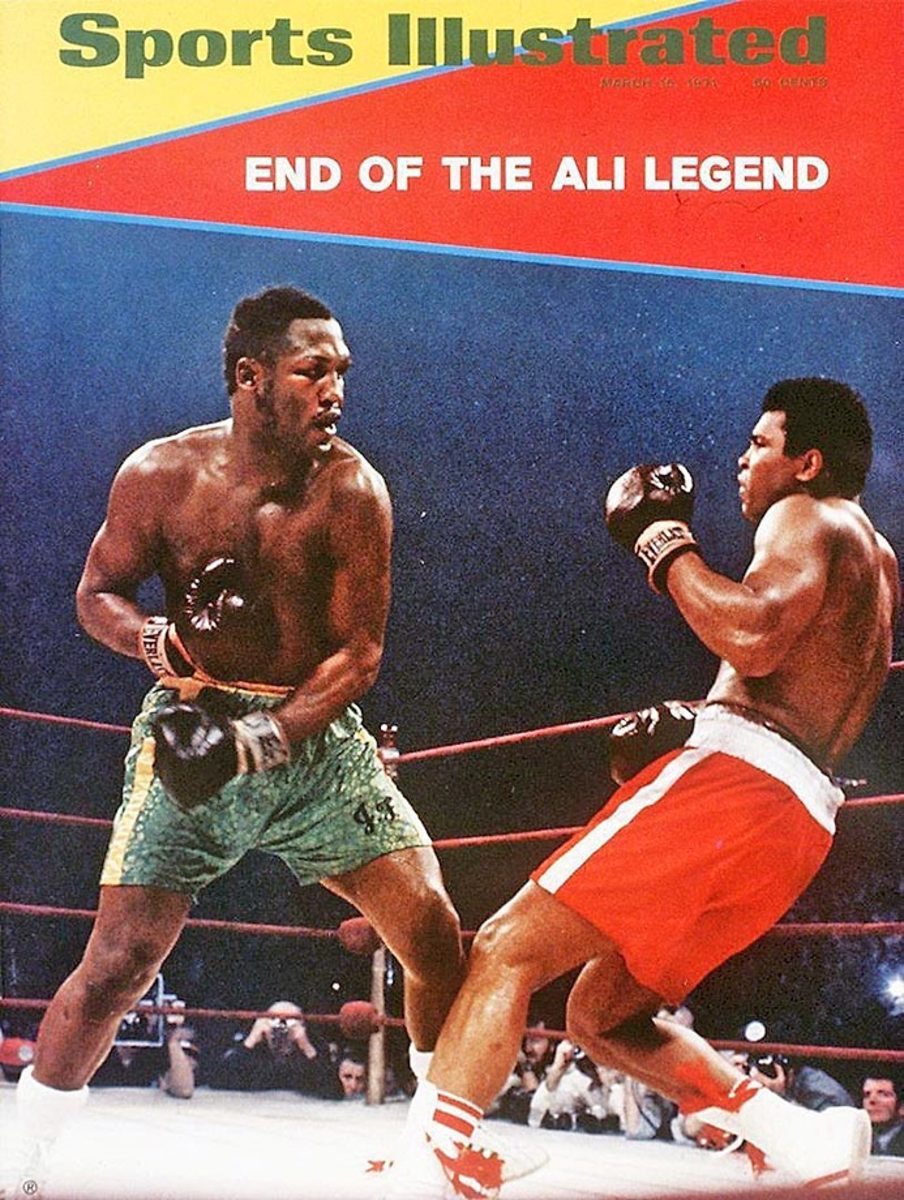
July 26, 1971
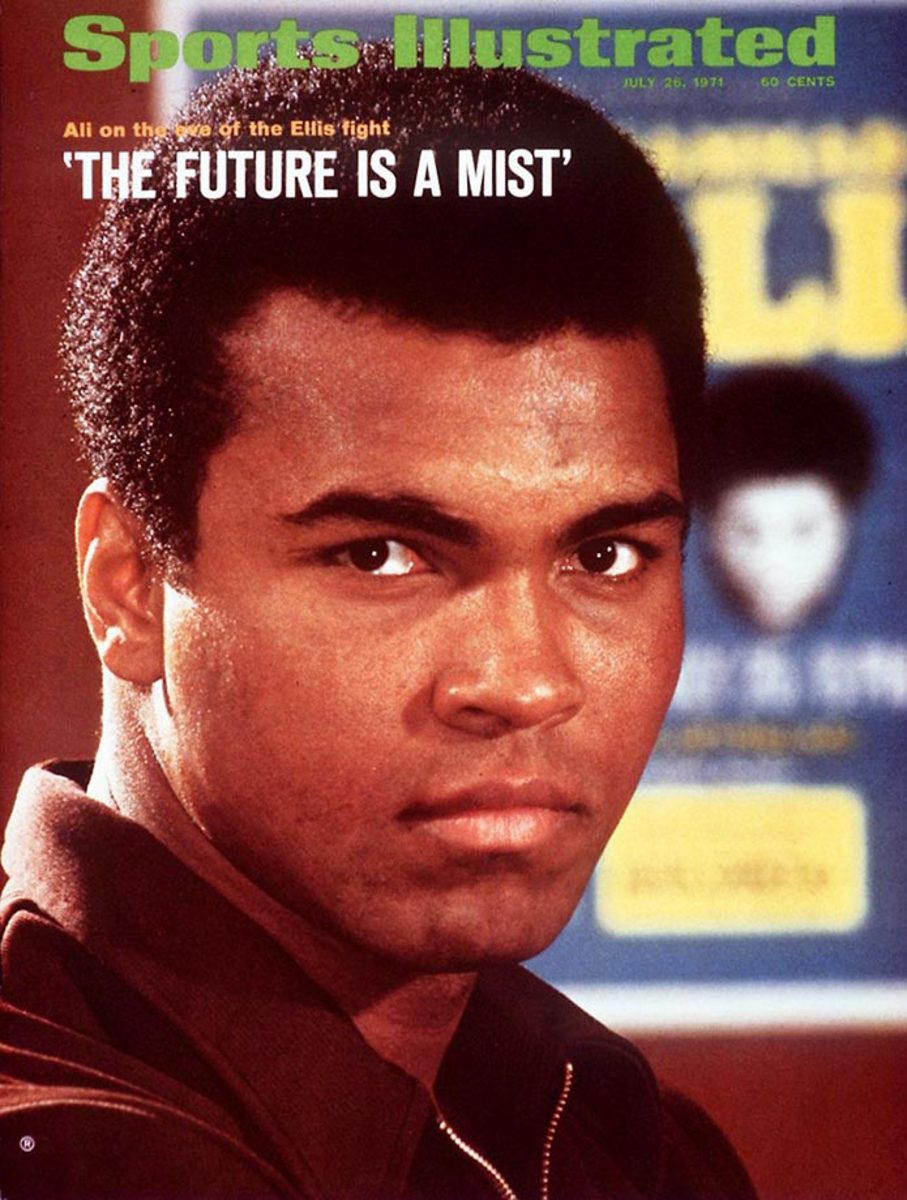
April 23, 1973
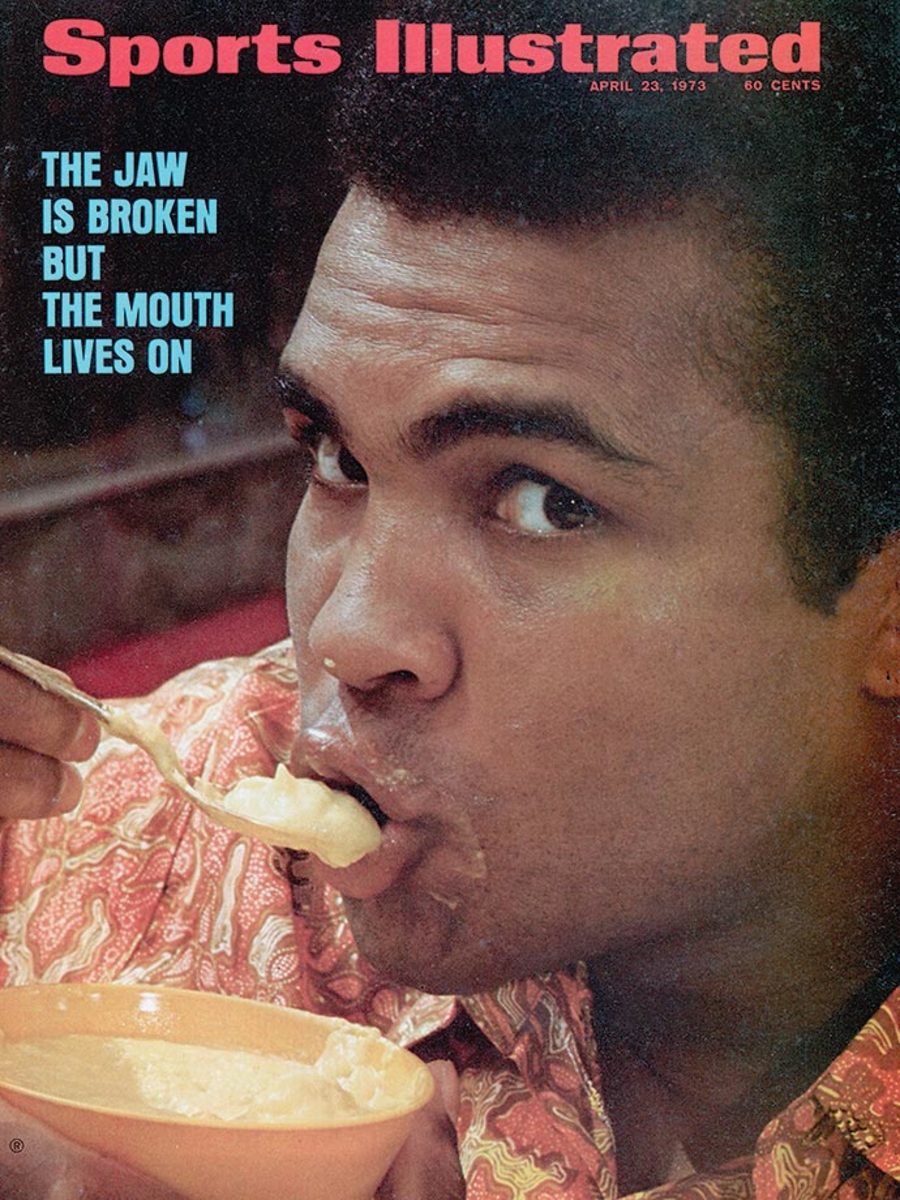
February 4, 1974
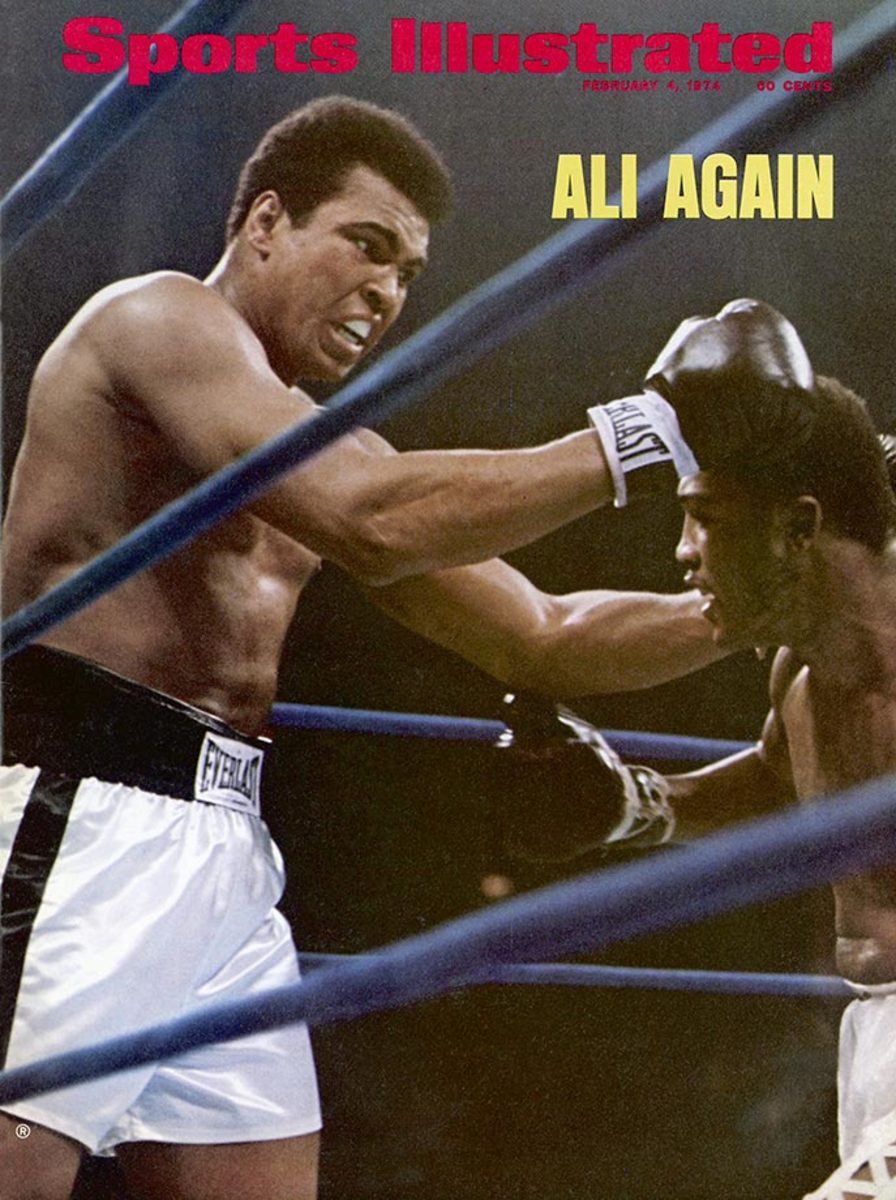
October 28, 1974
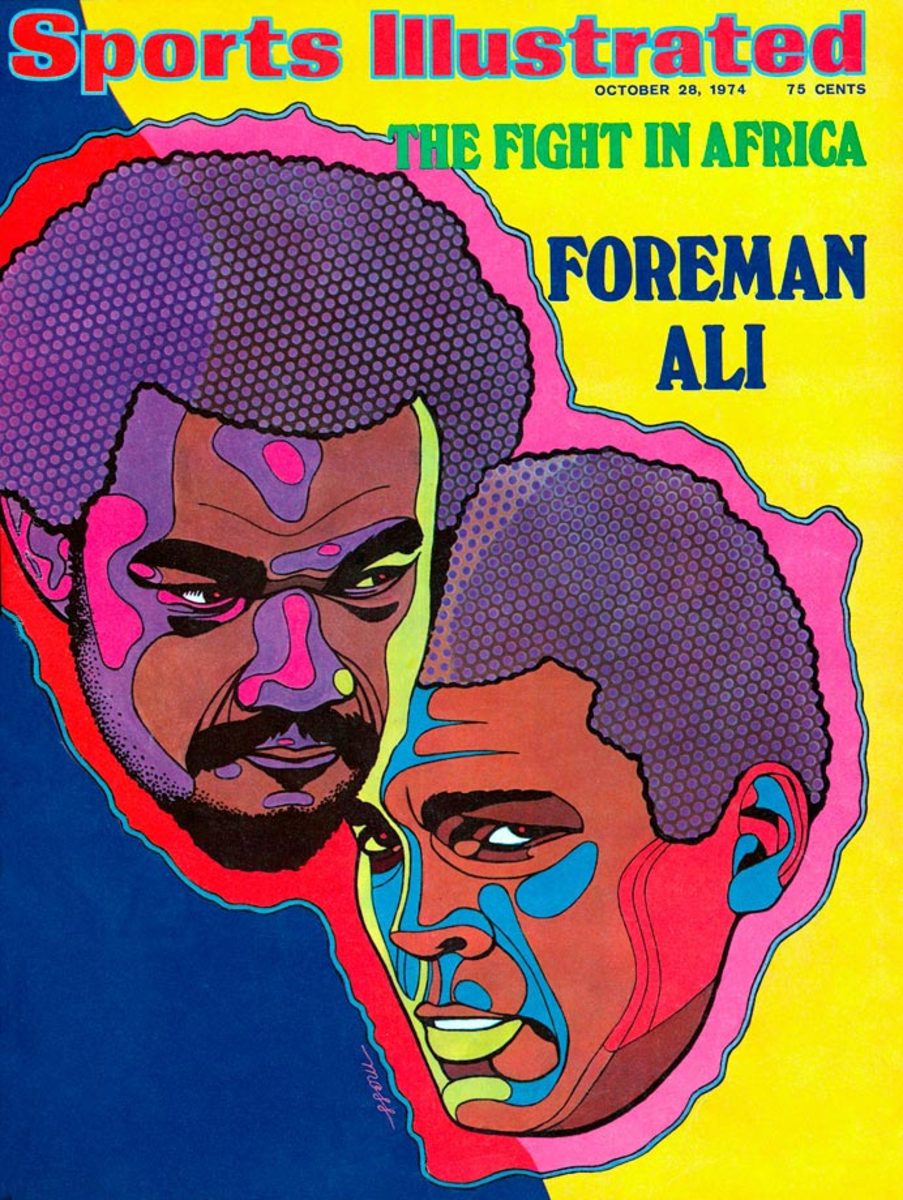
November 11, 1974
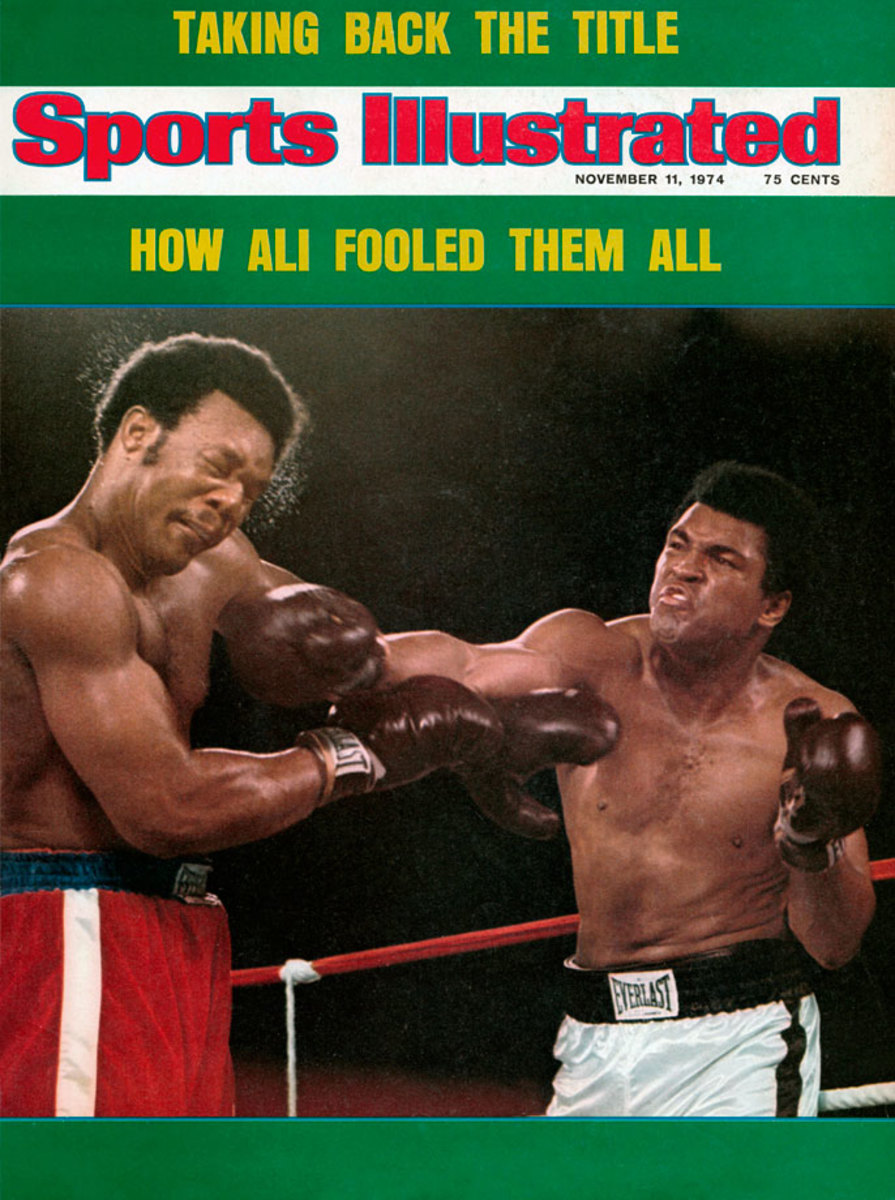
December 23, 1974
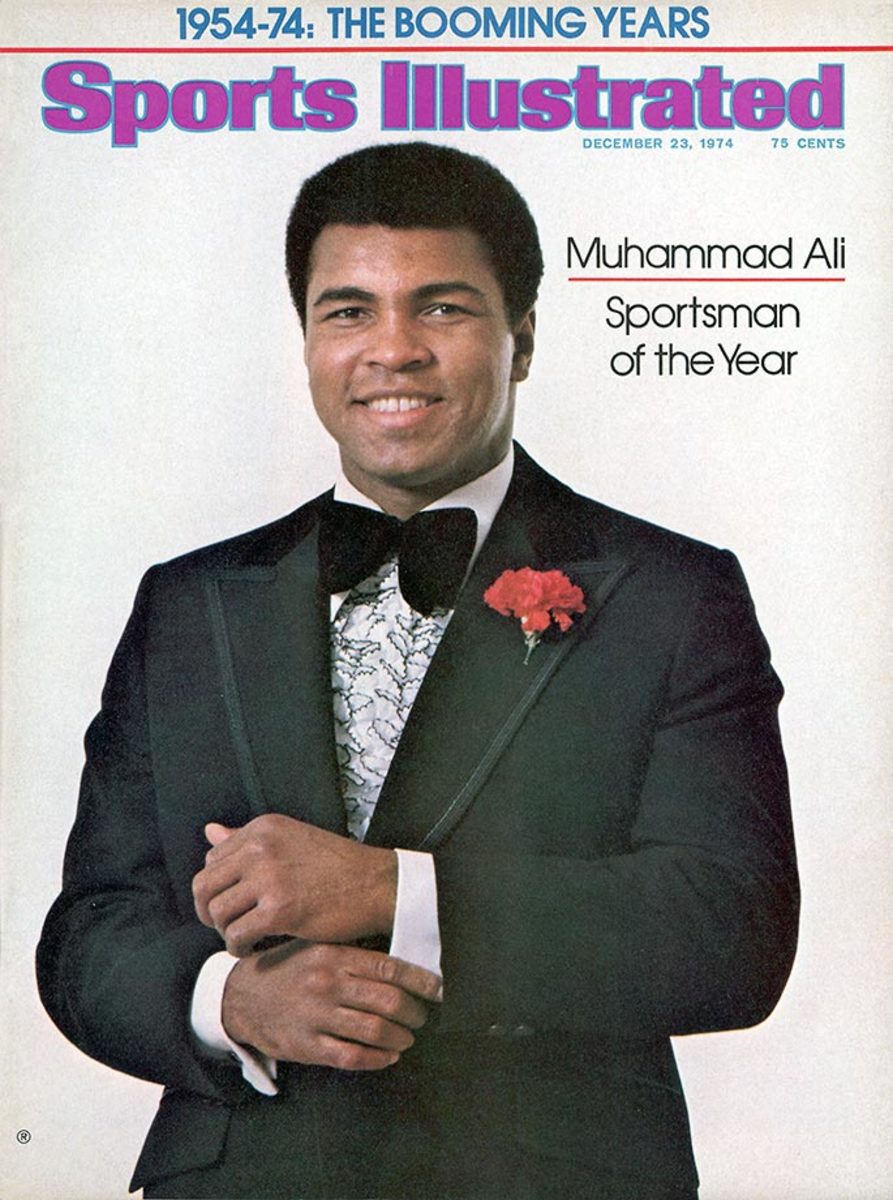
September 15, 1975
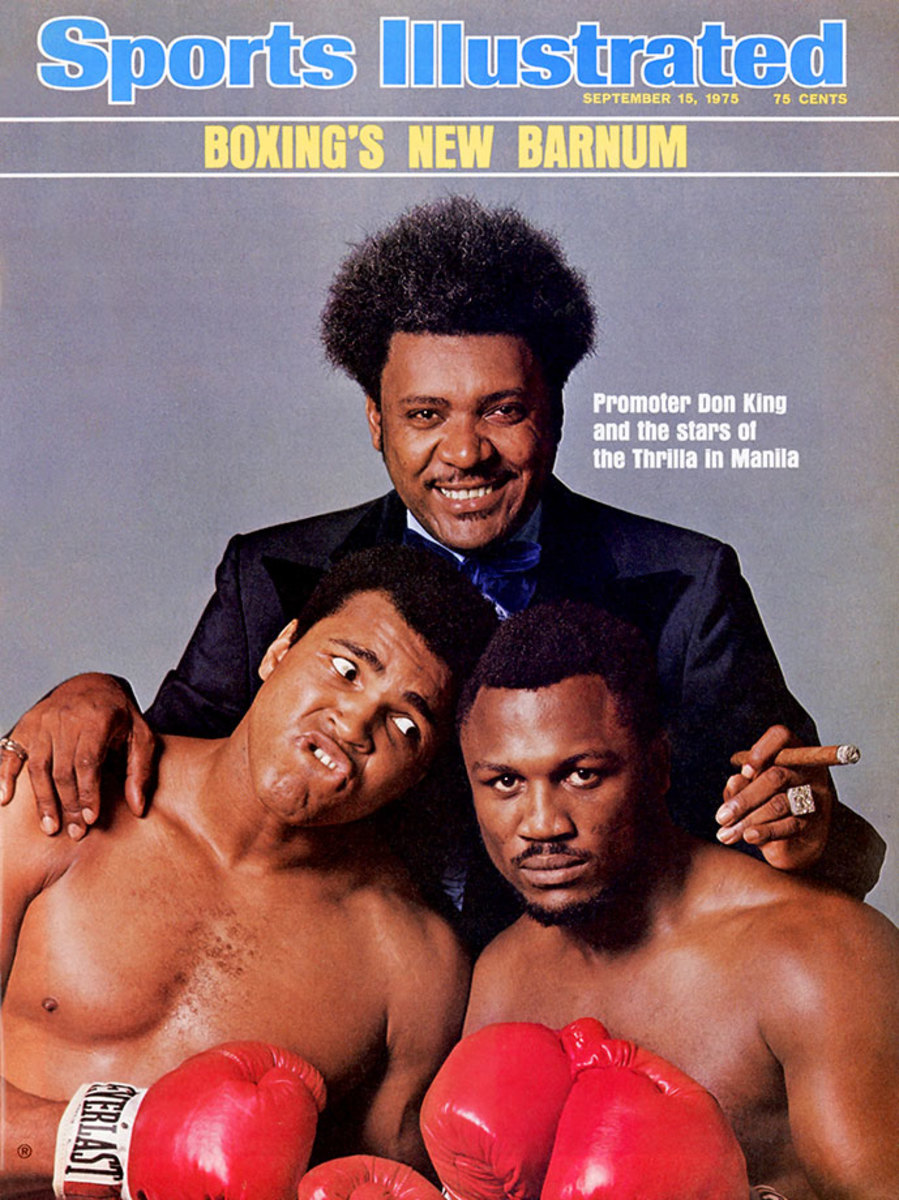
October 13, 1975
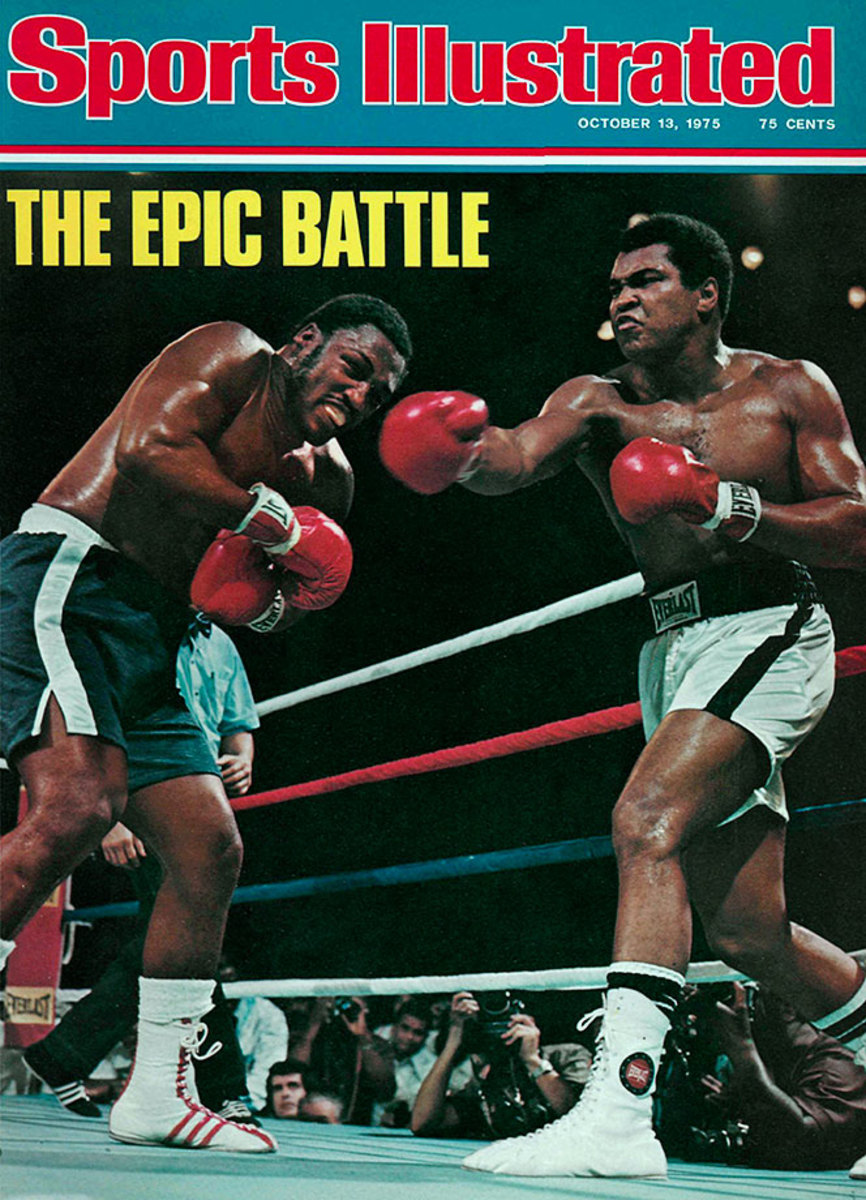
March 1, 1976
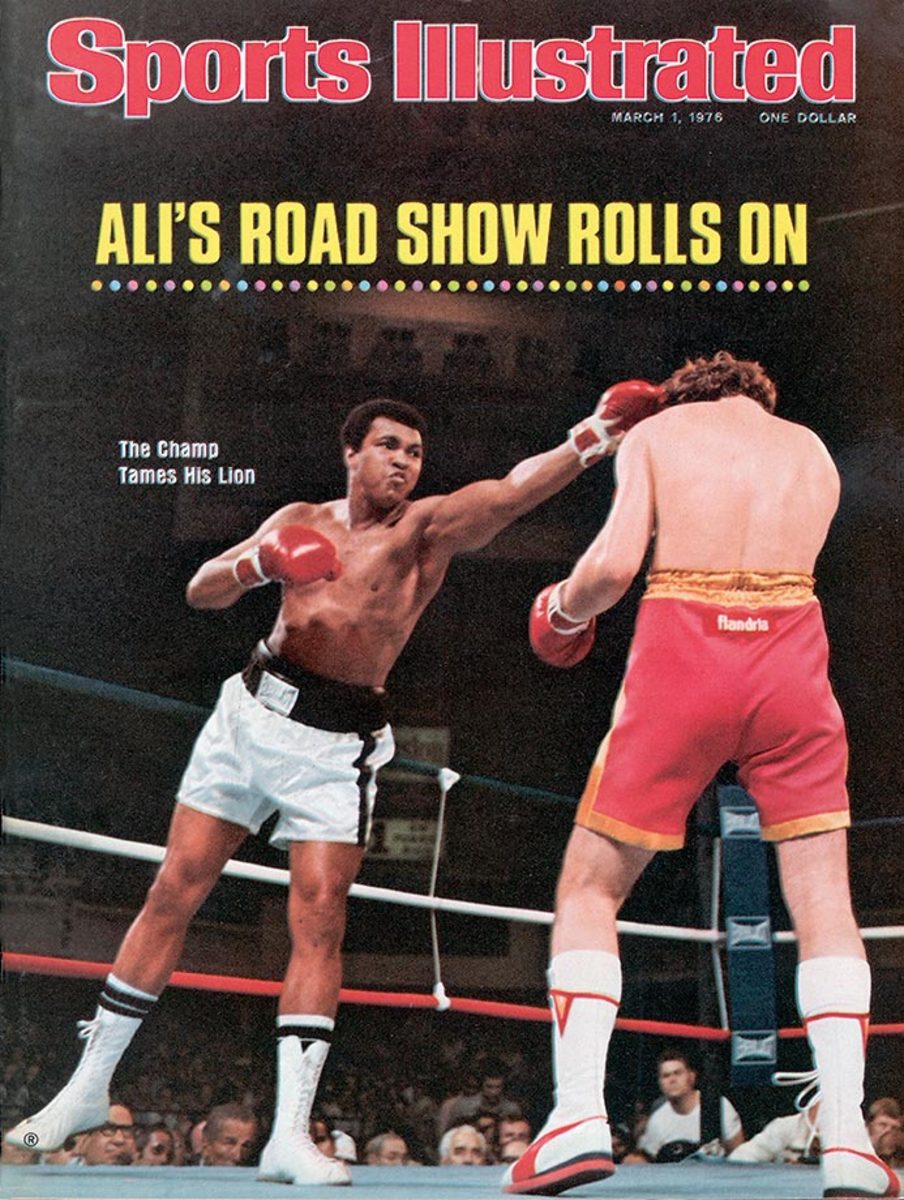
October 10, 1977
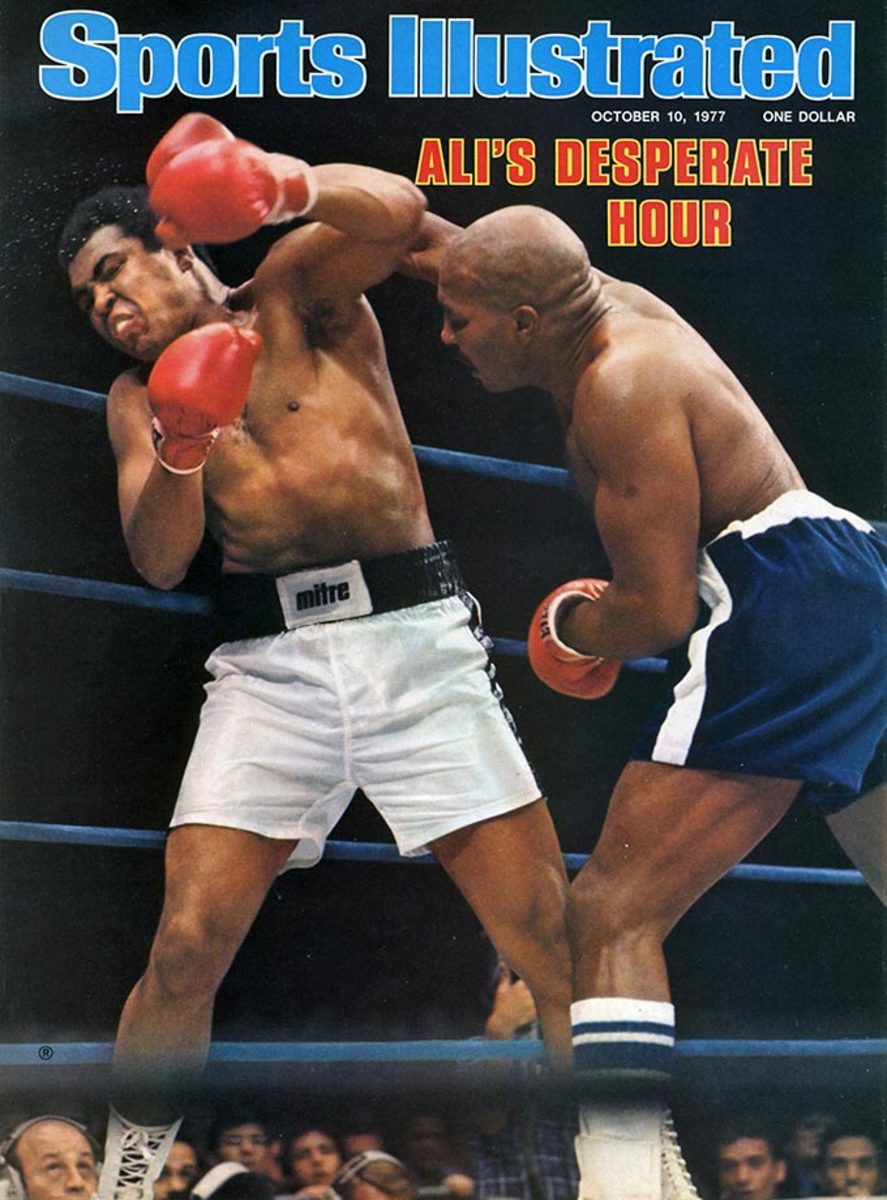
September 25, 1978
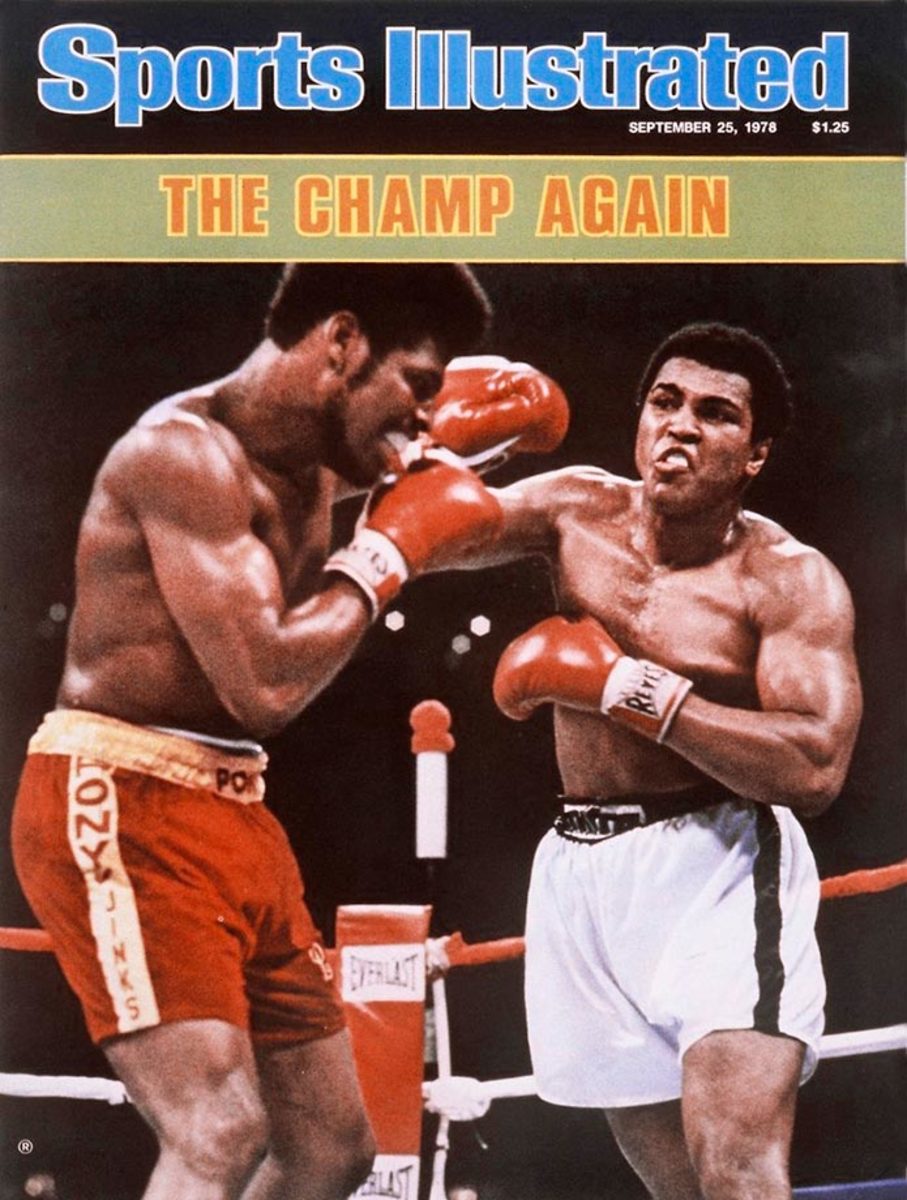
April 14, 1980
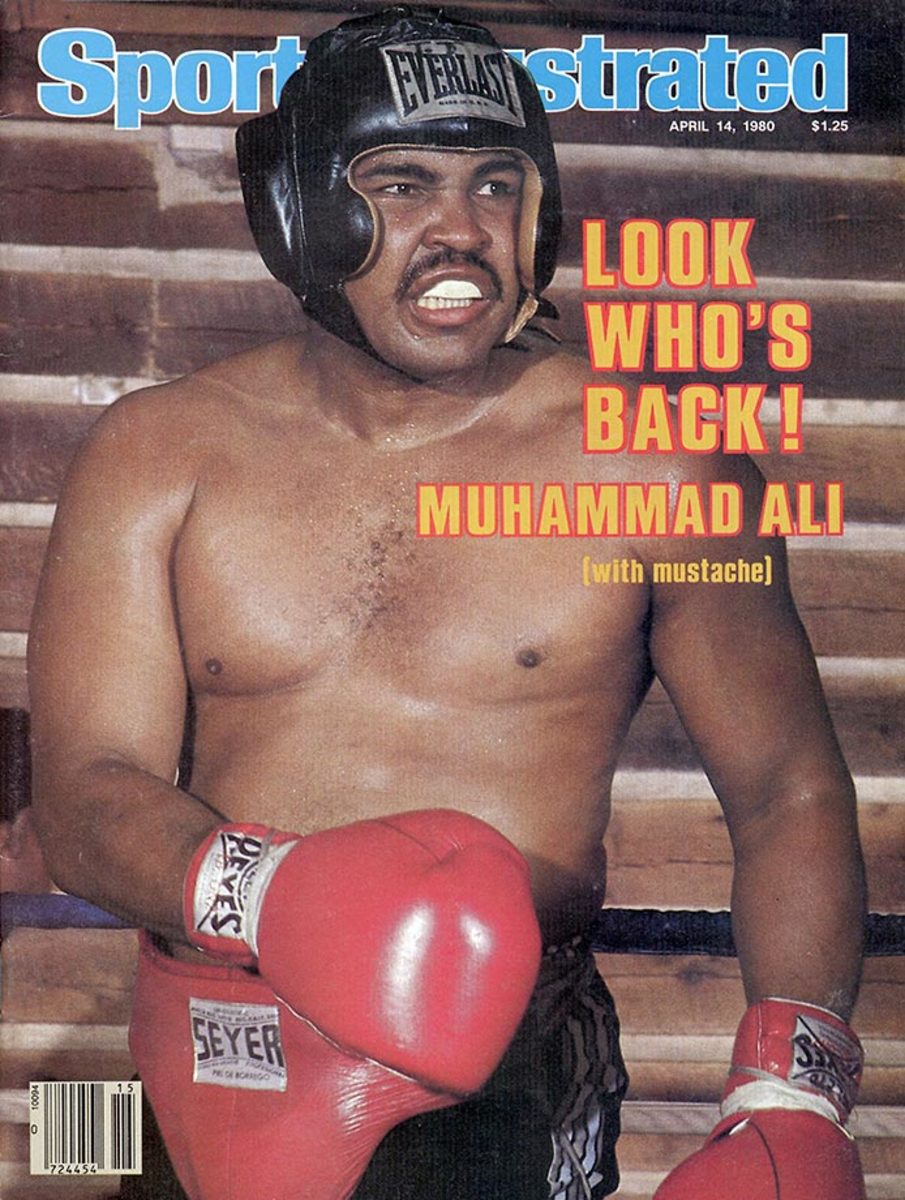
September 29, 1980
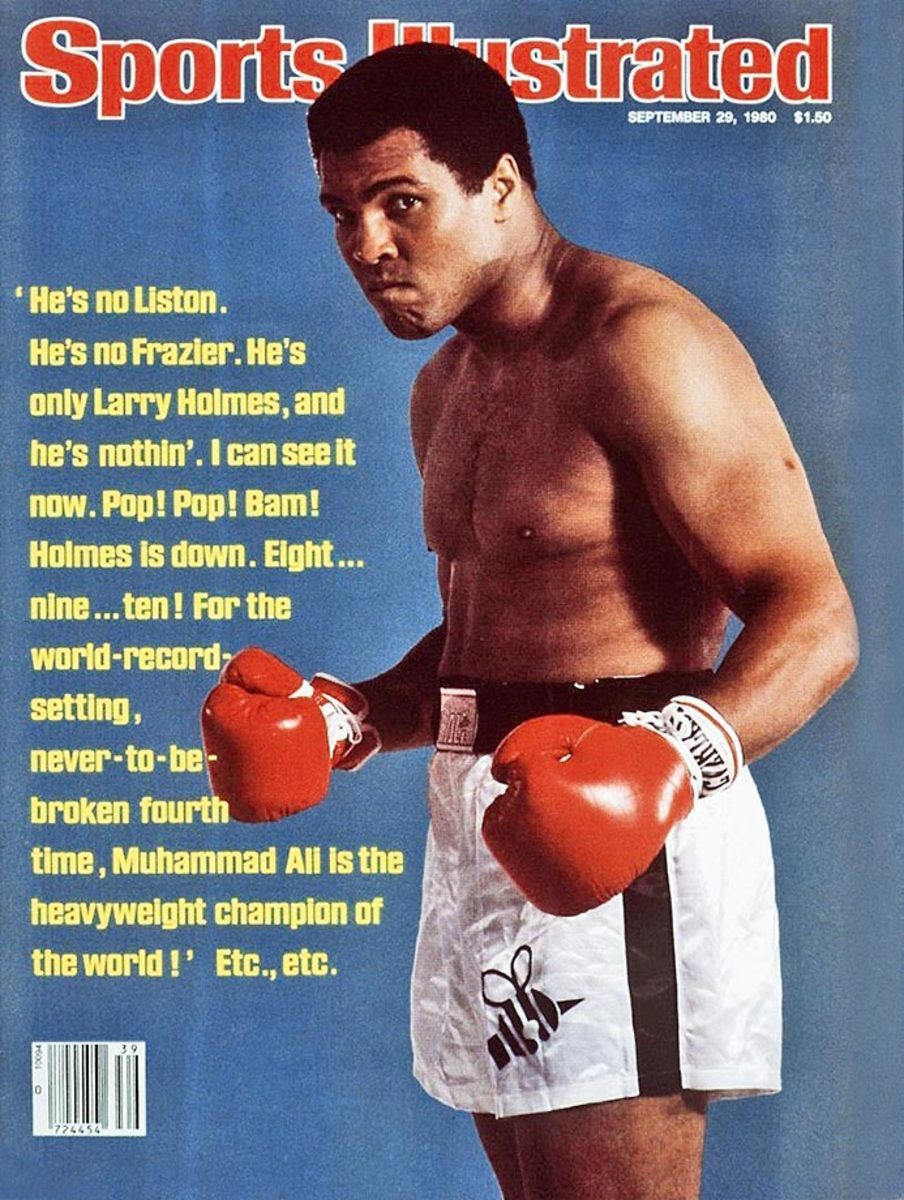
October 13, 1980
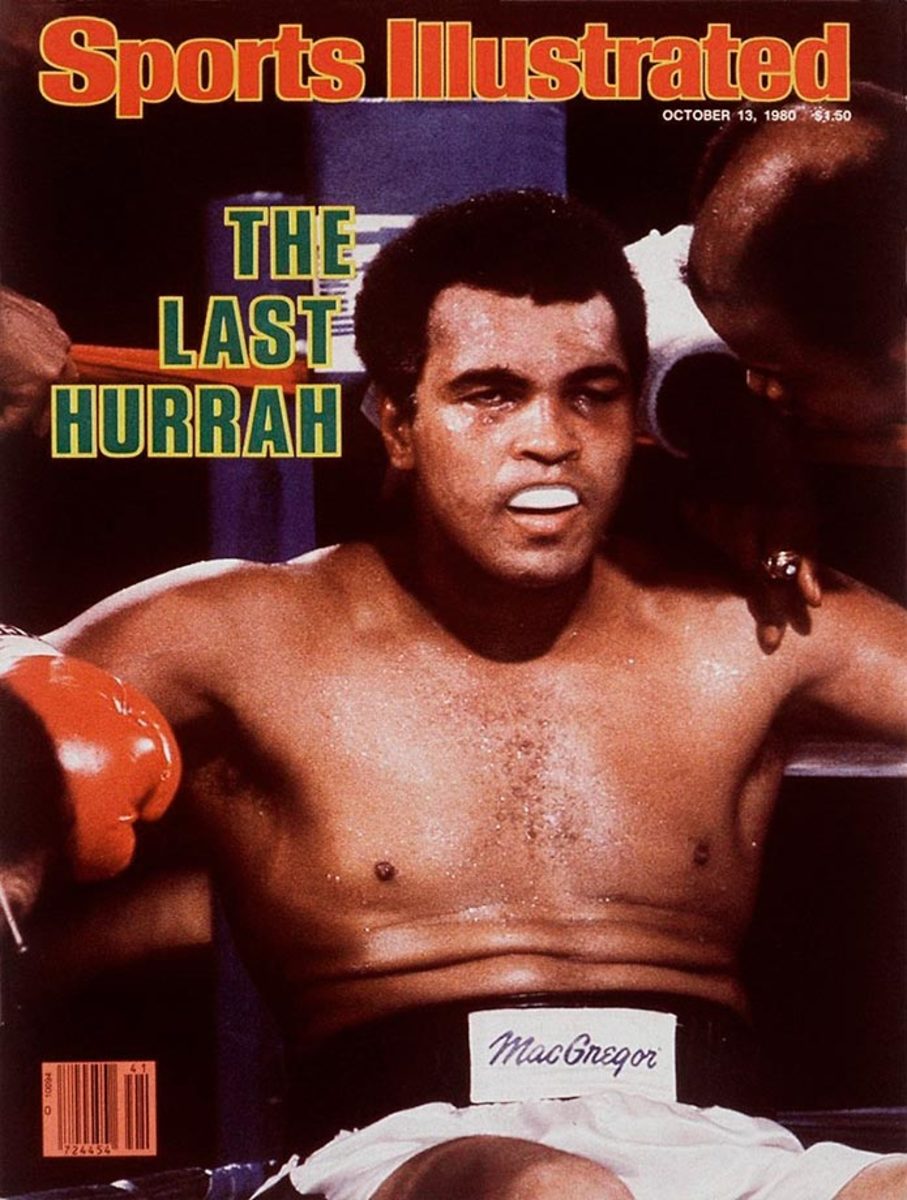
April 25, 1988
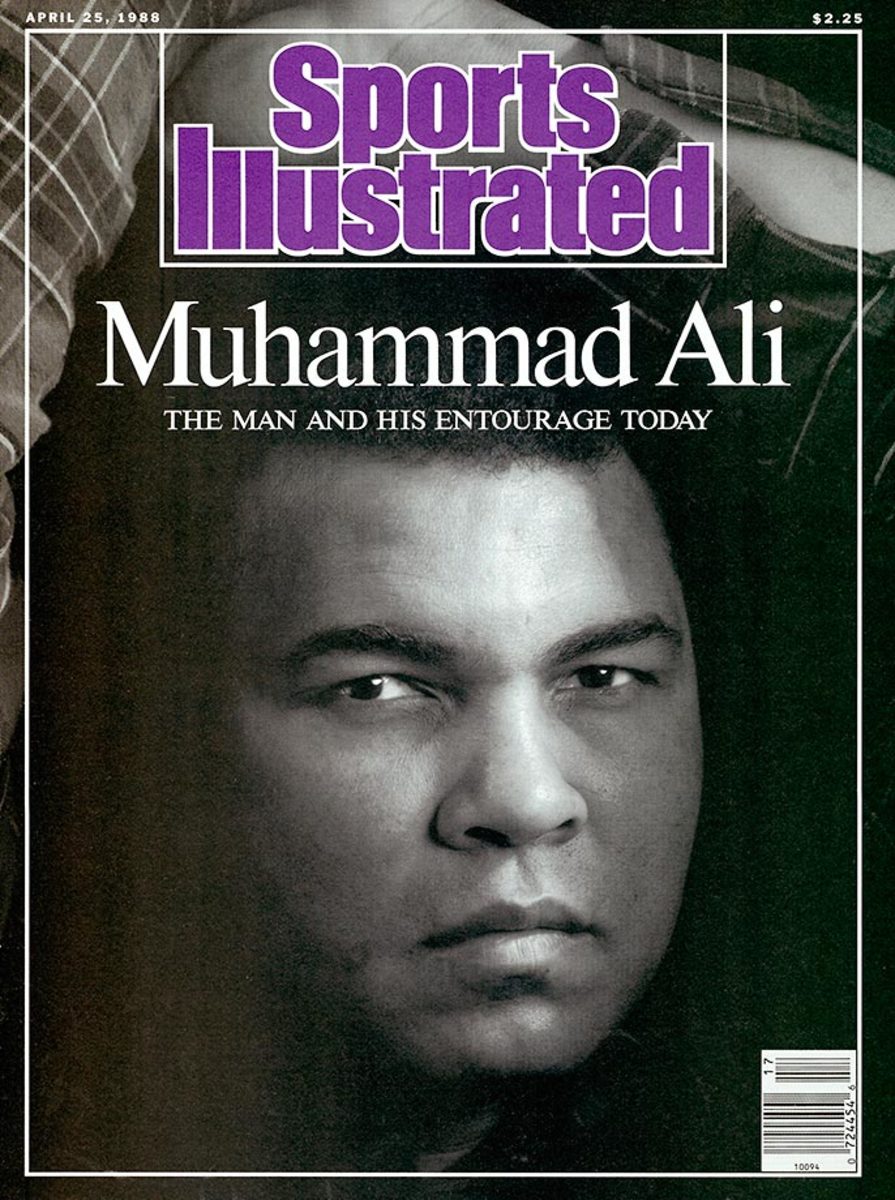
November 15, 1989
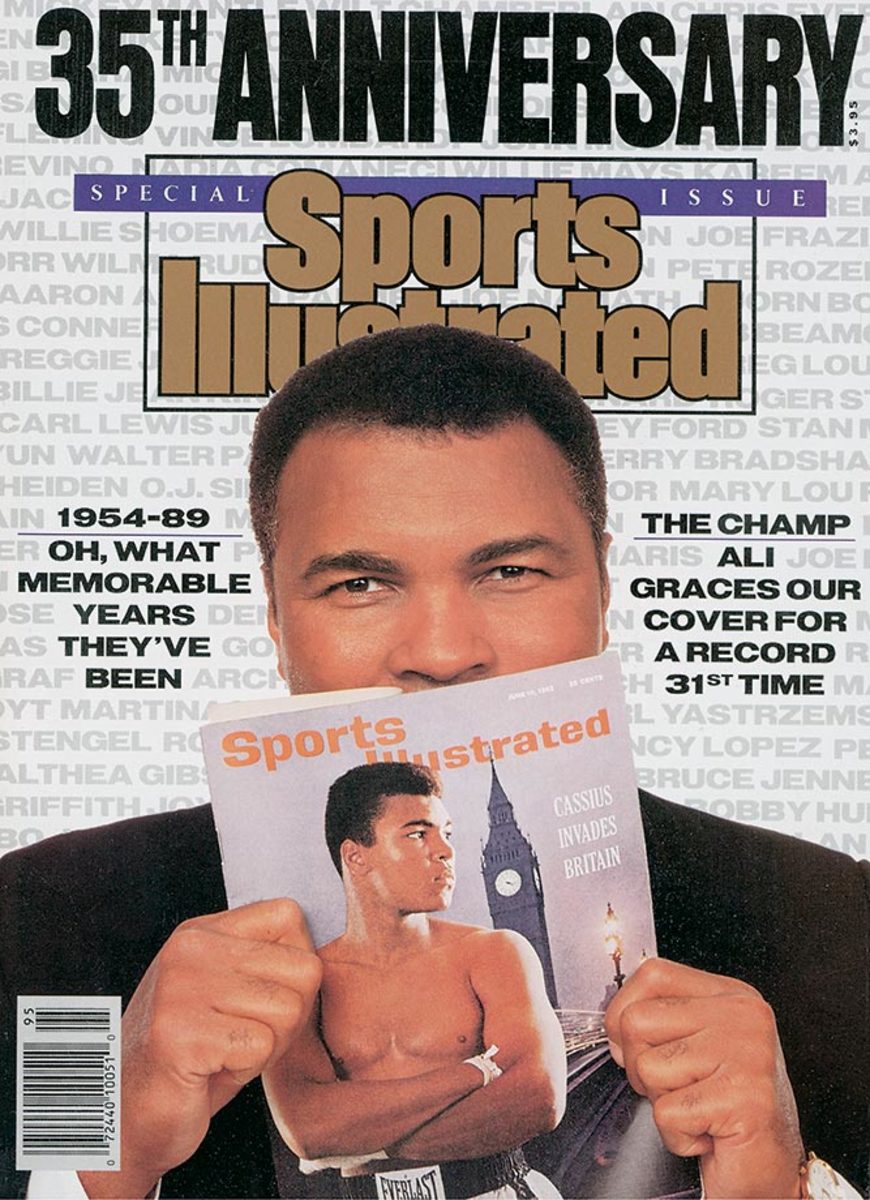
January 13, 1992
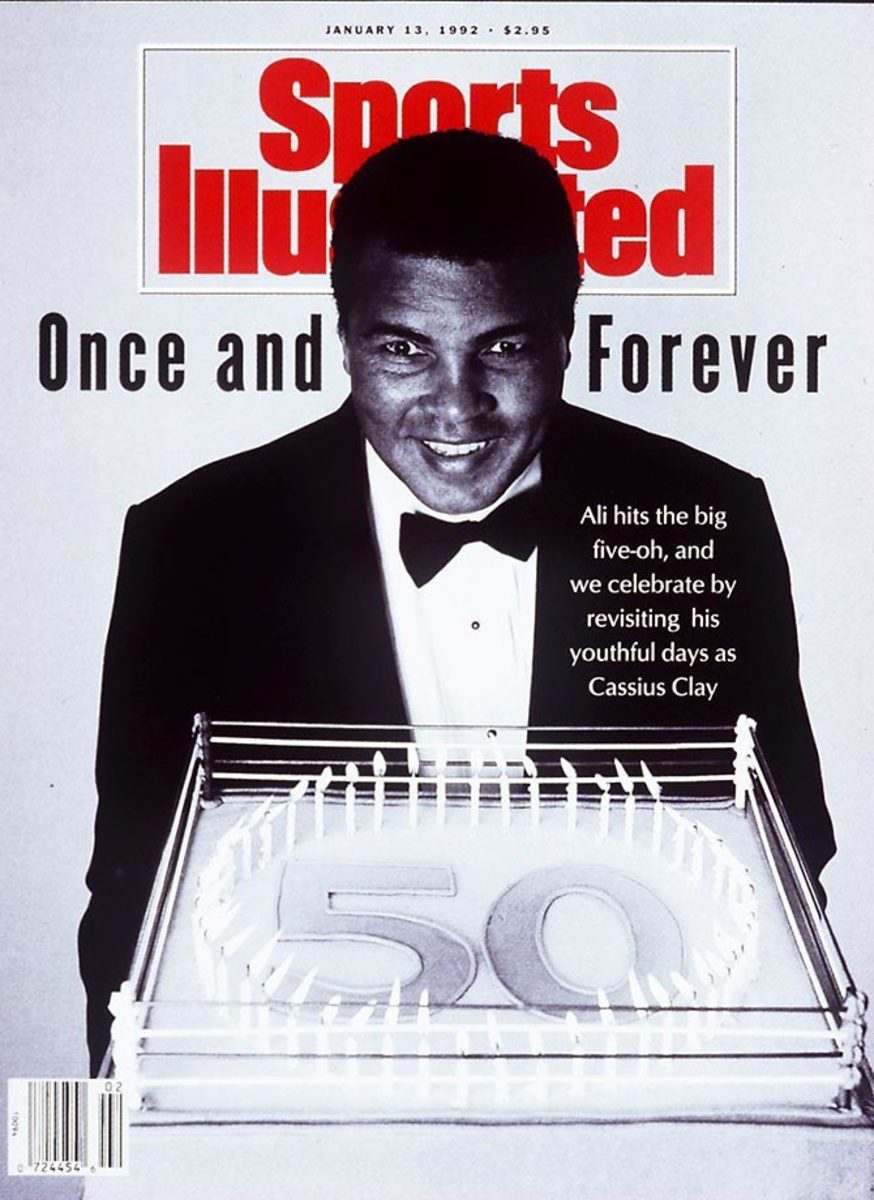
September 19, 1994
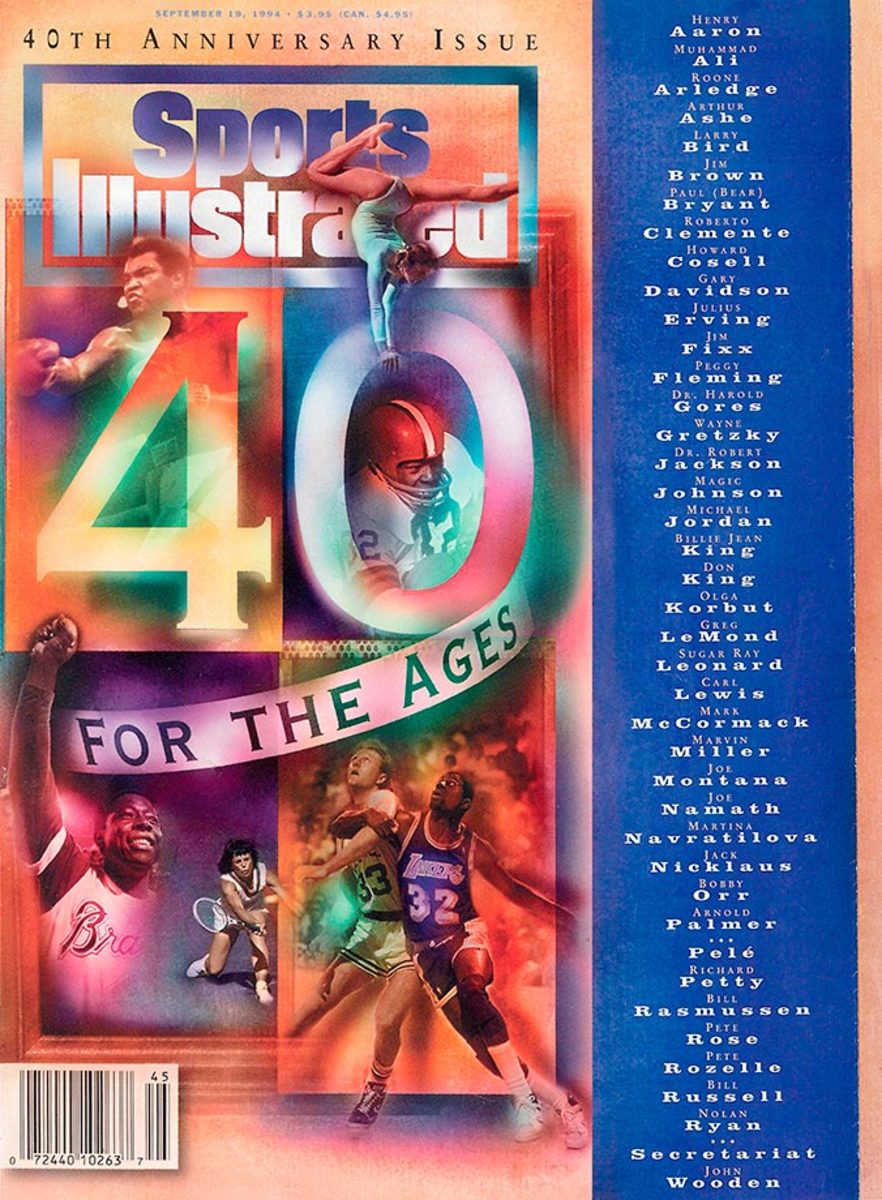
September 30, 1996
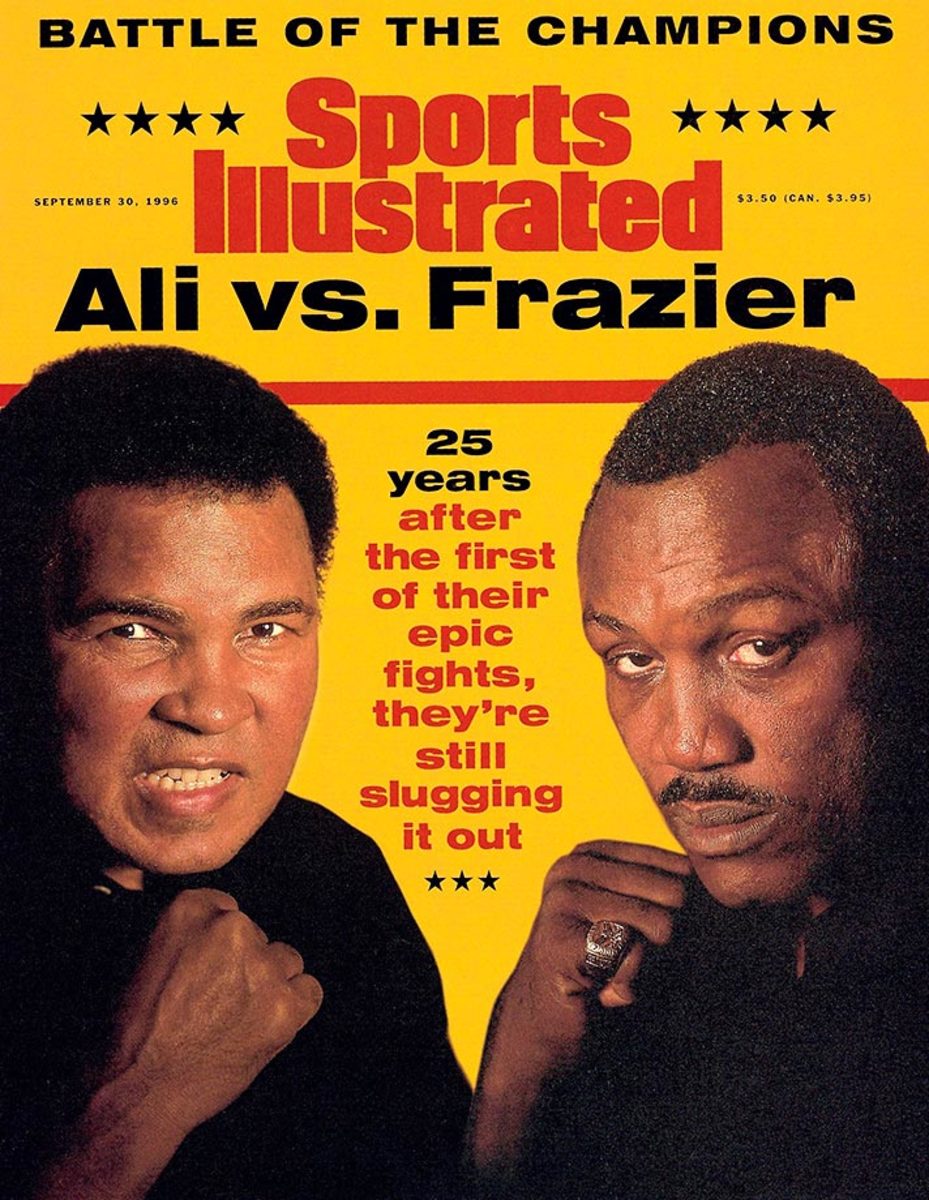
July 13, 1998
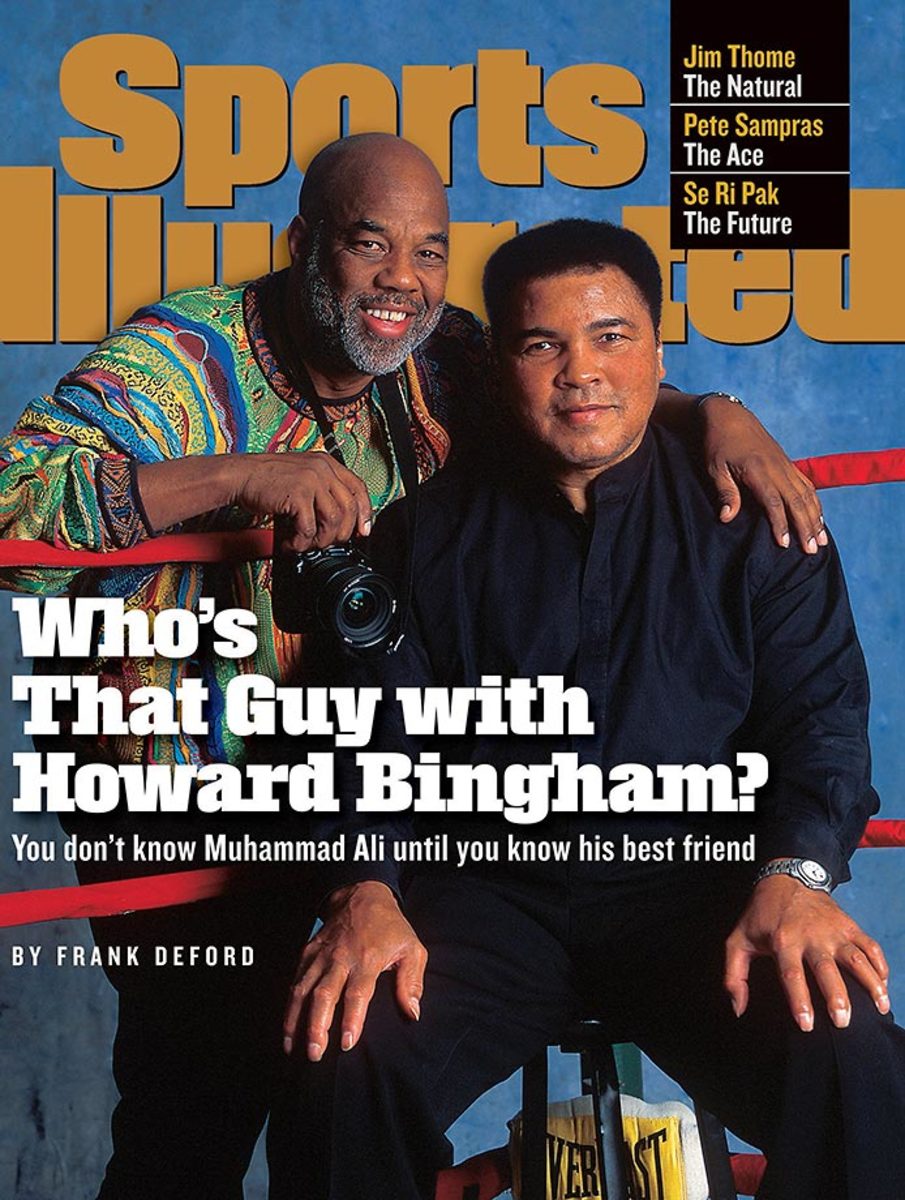
December 28, 1998
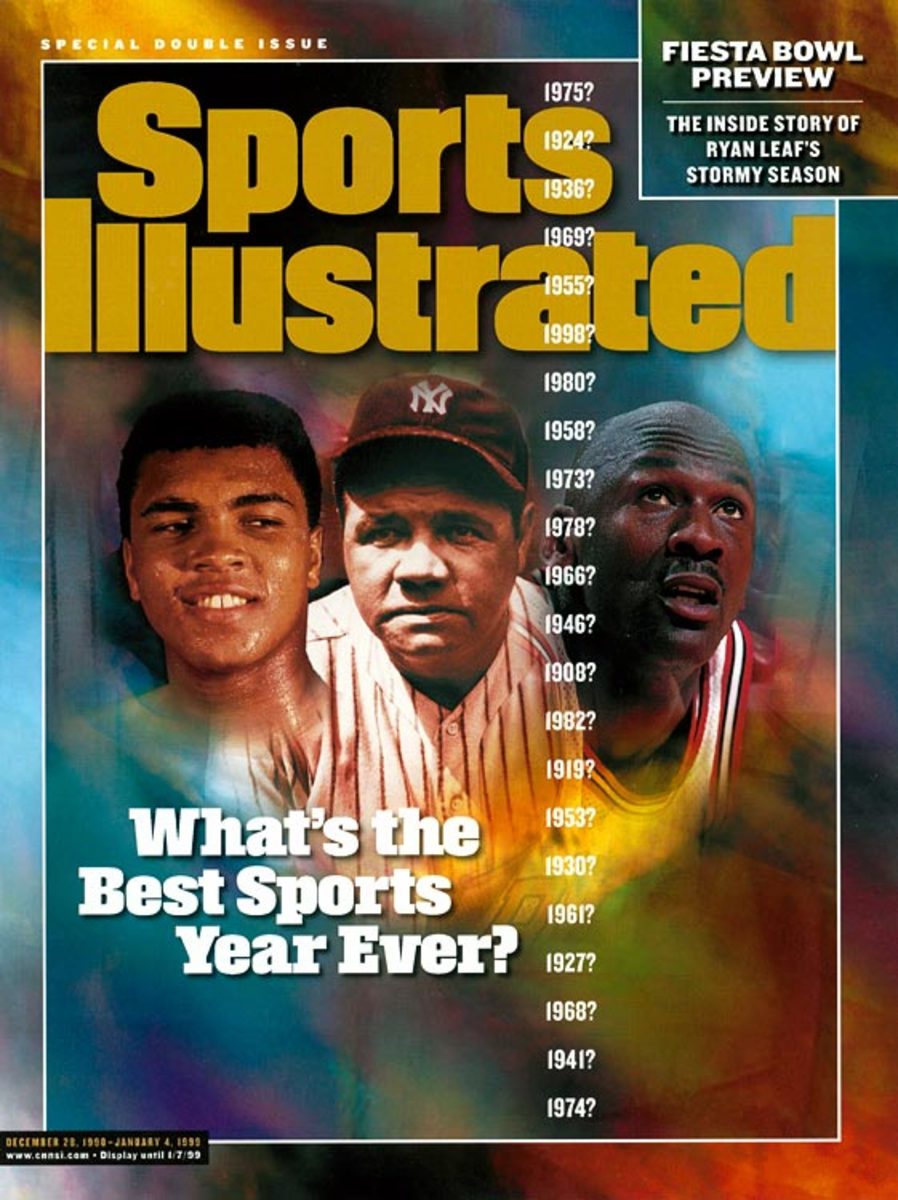
July 26, 1999
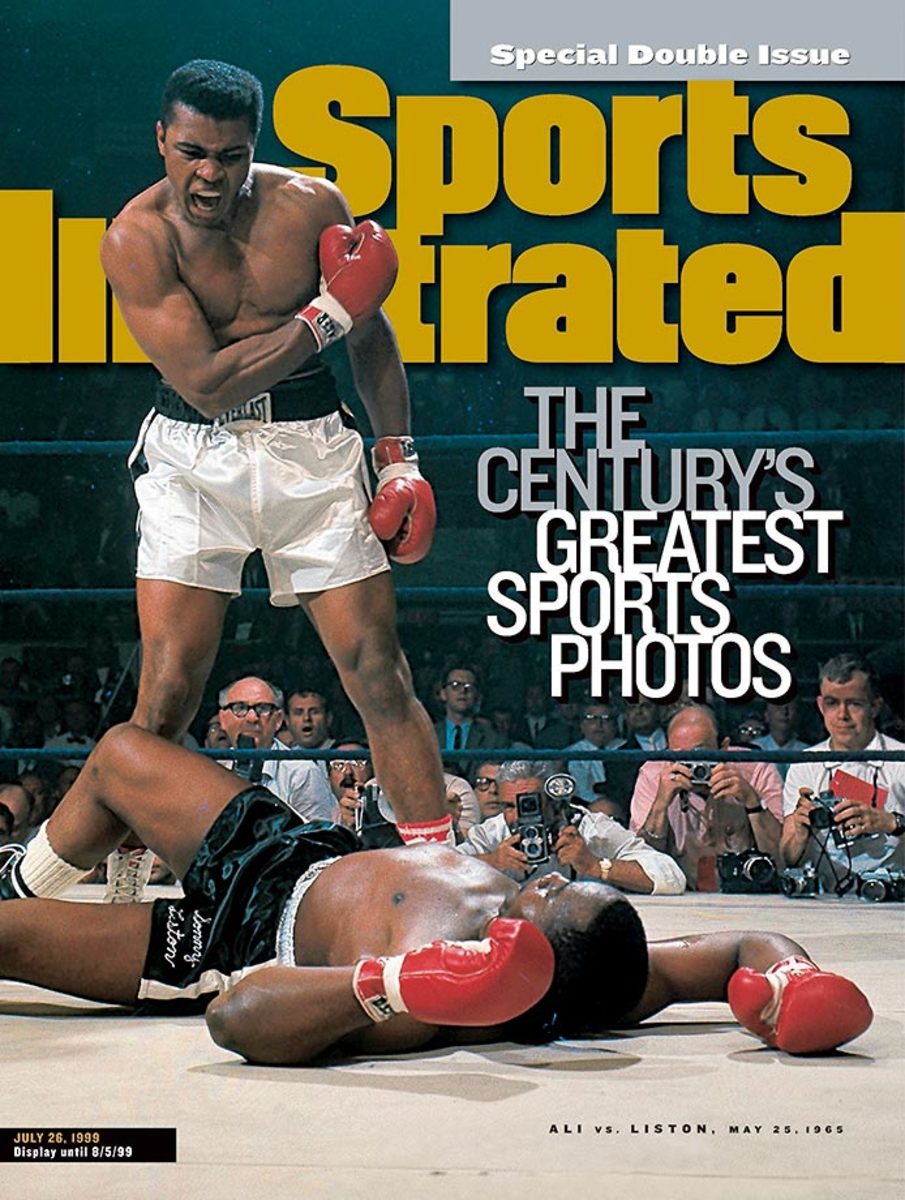
November 29, 1999
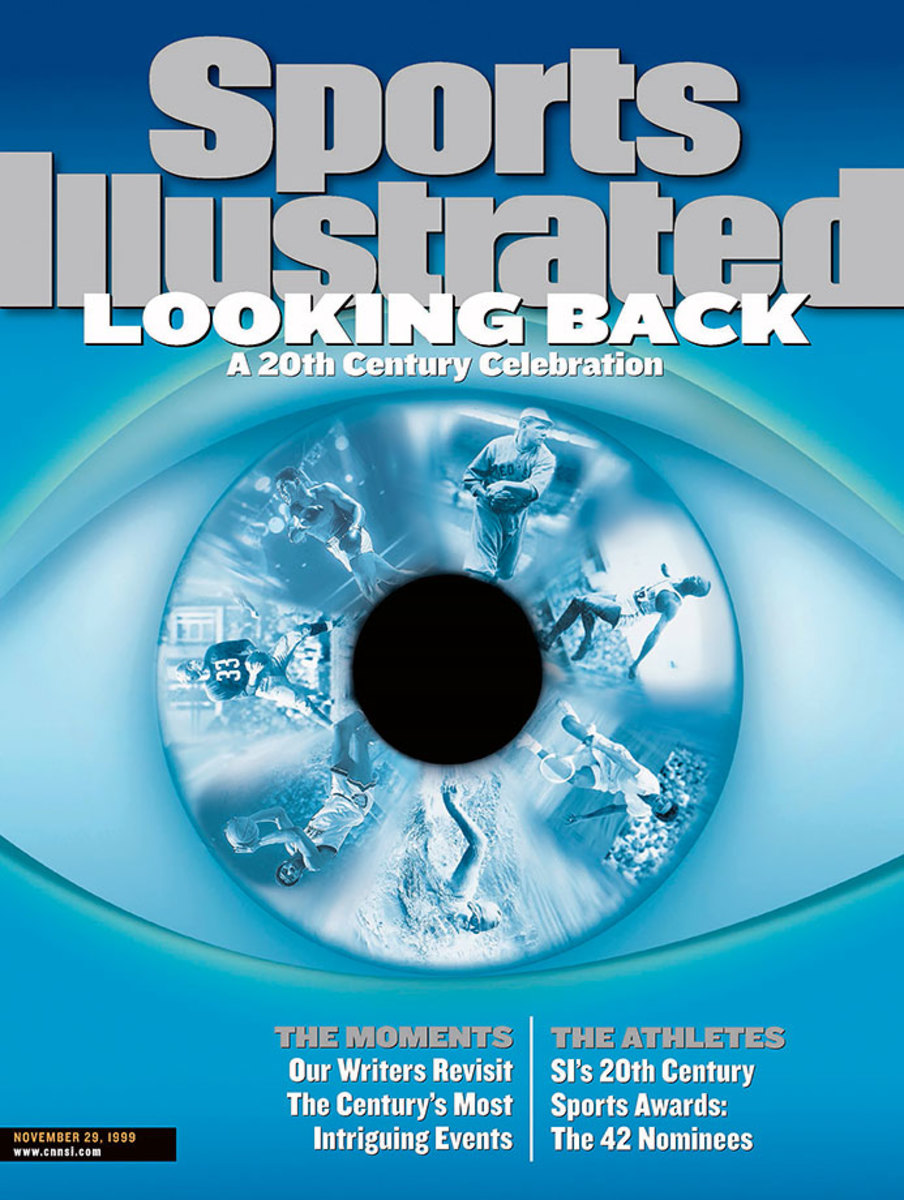
April 26, 2004
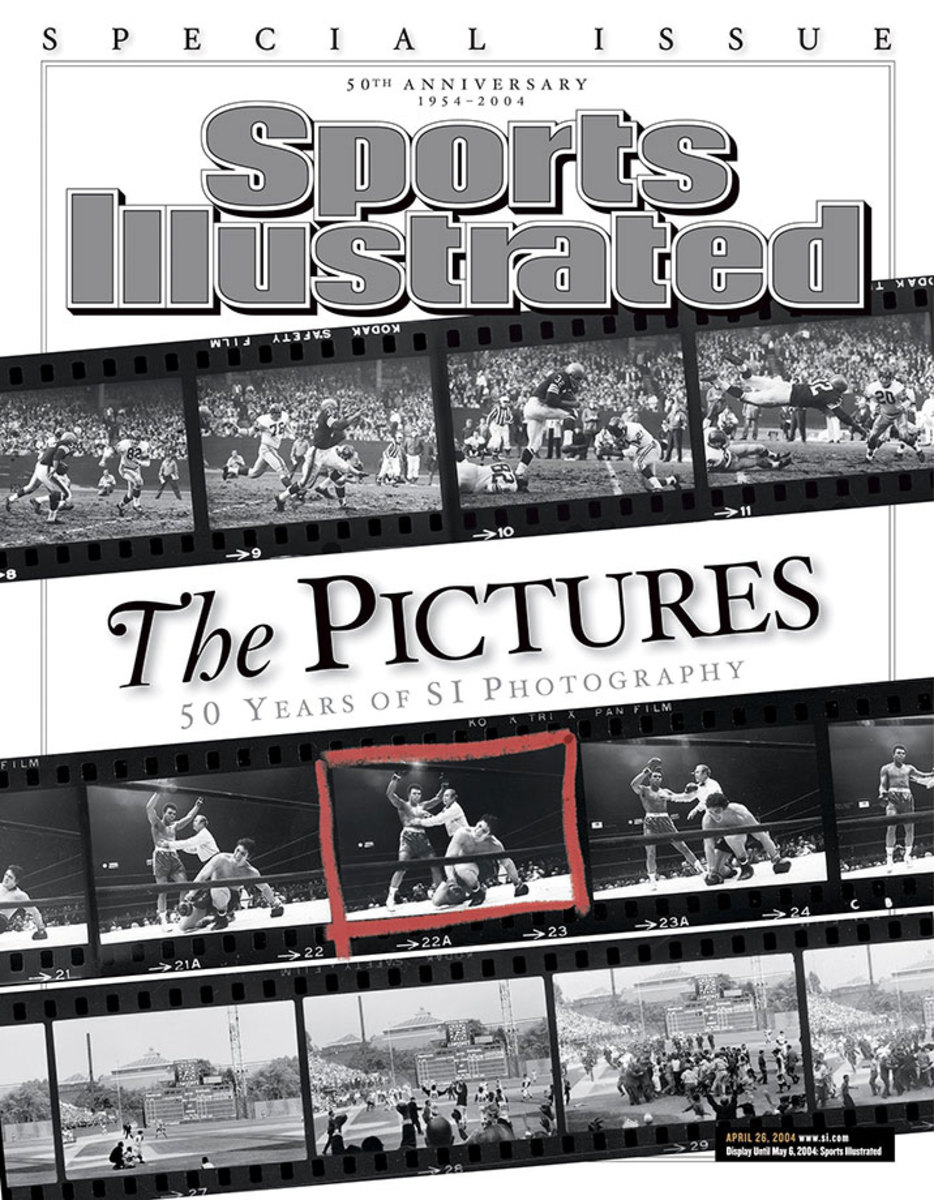
October 5, 2015
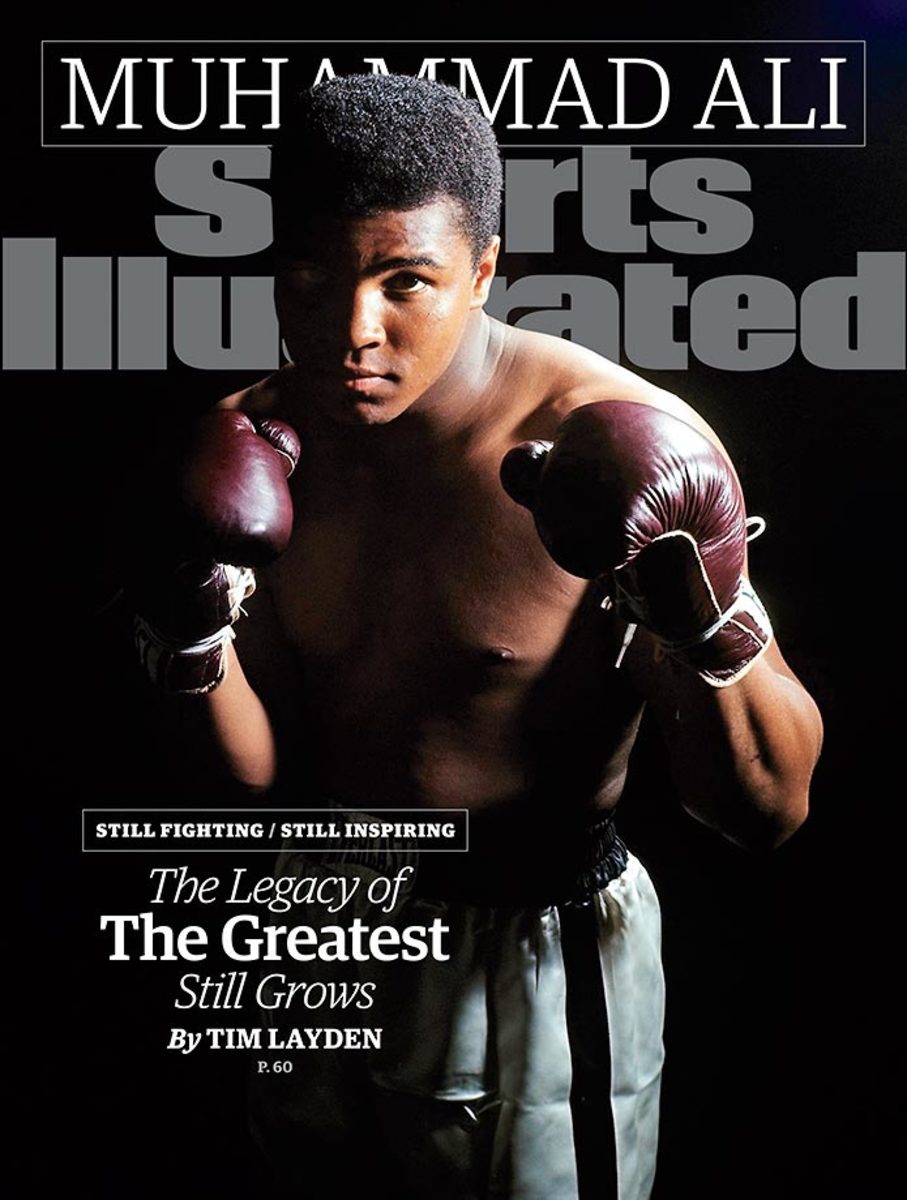
June 13, 2016
